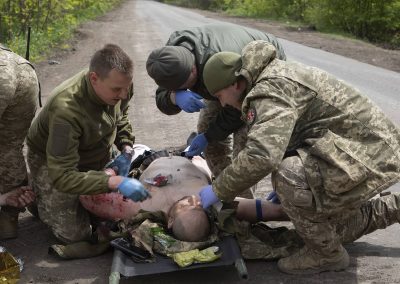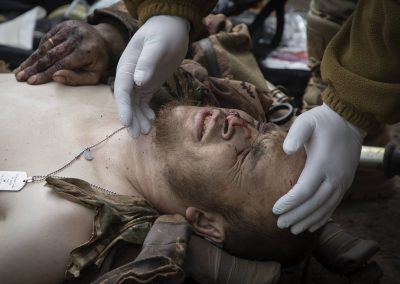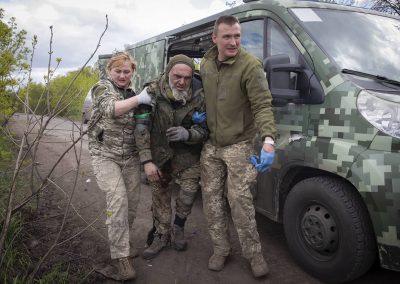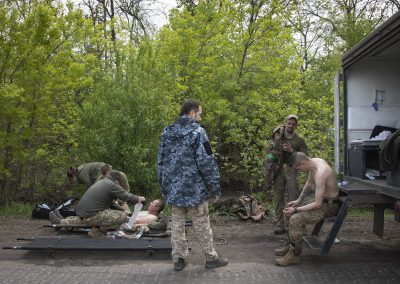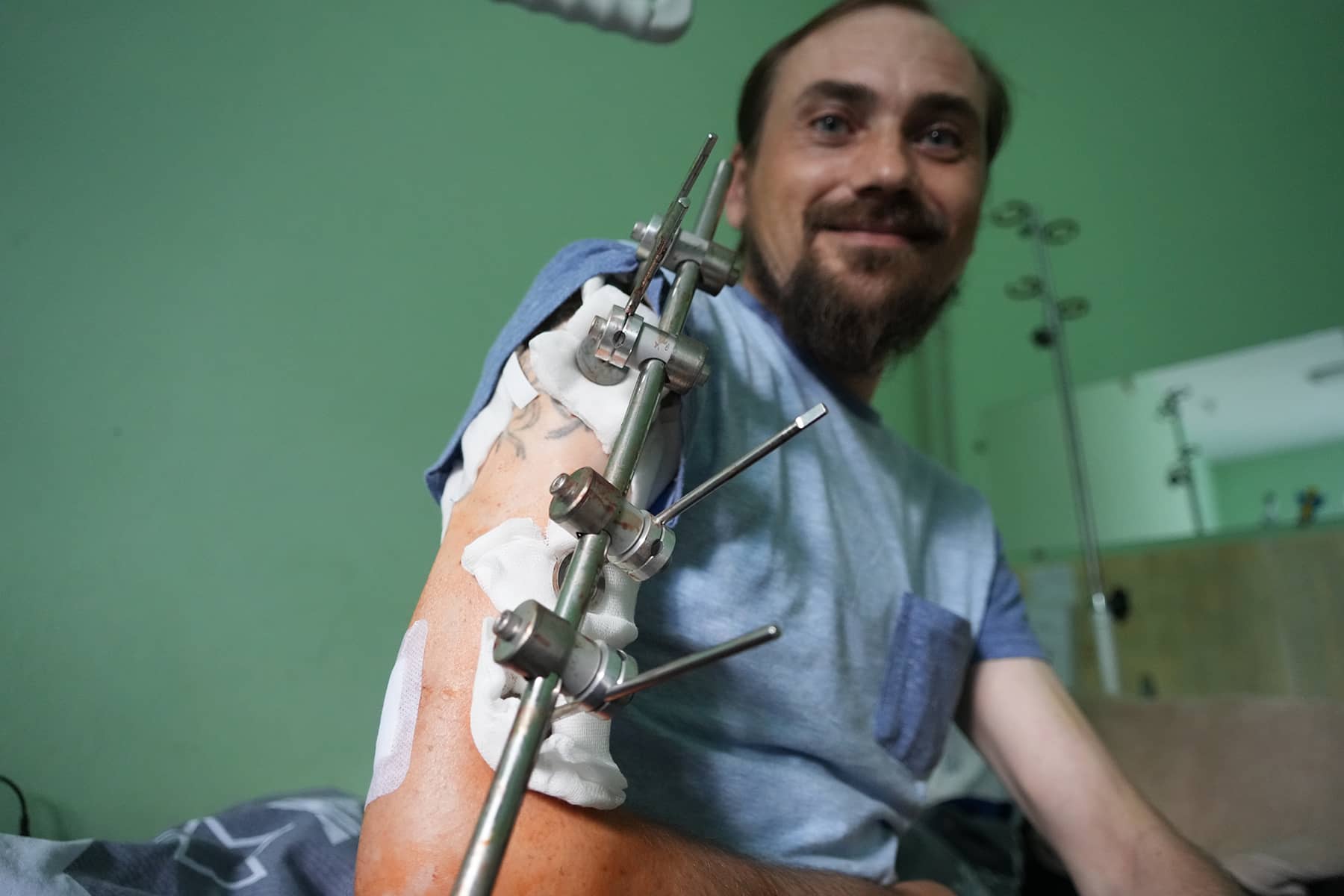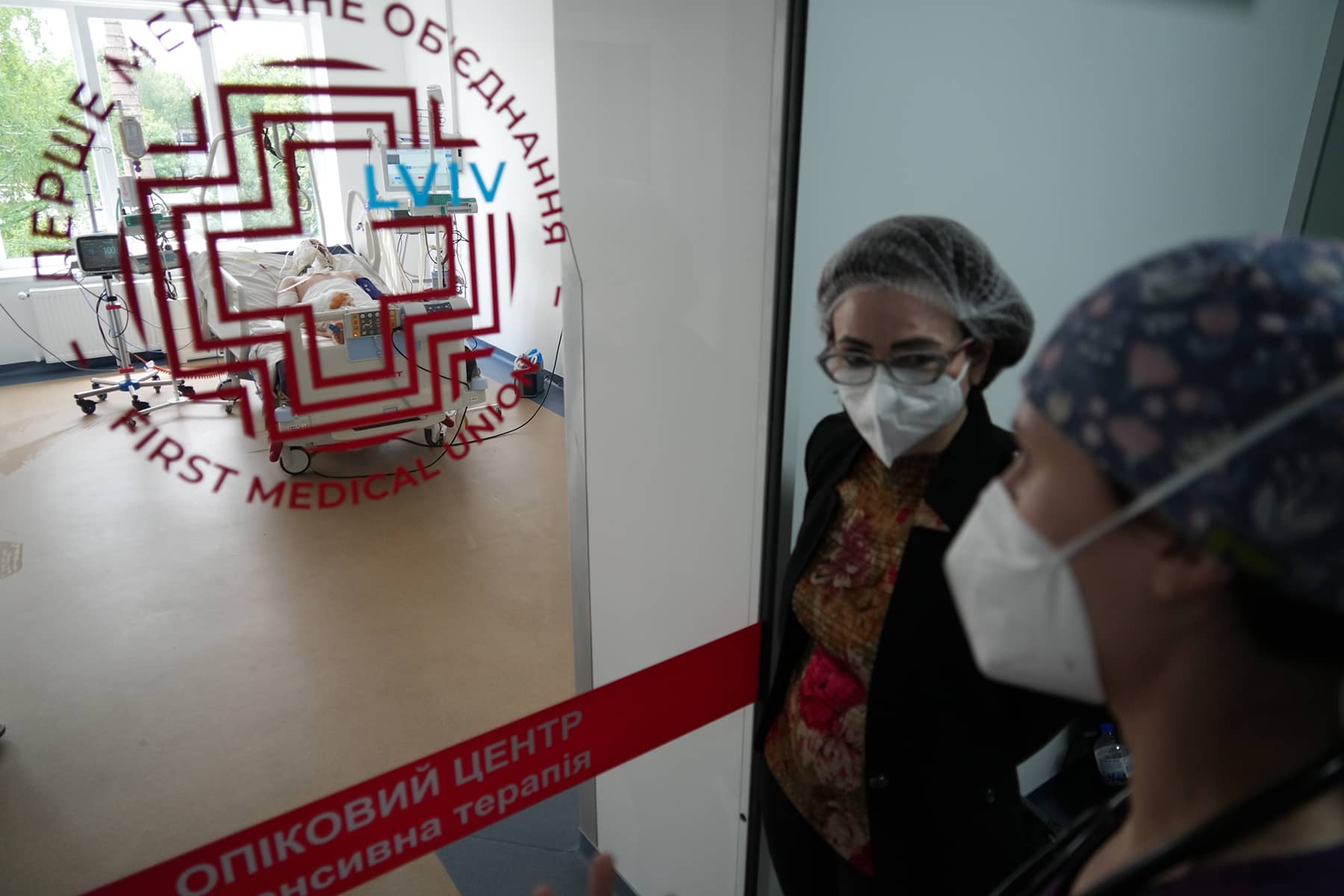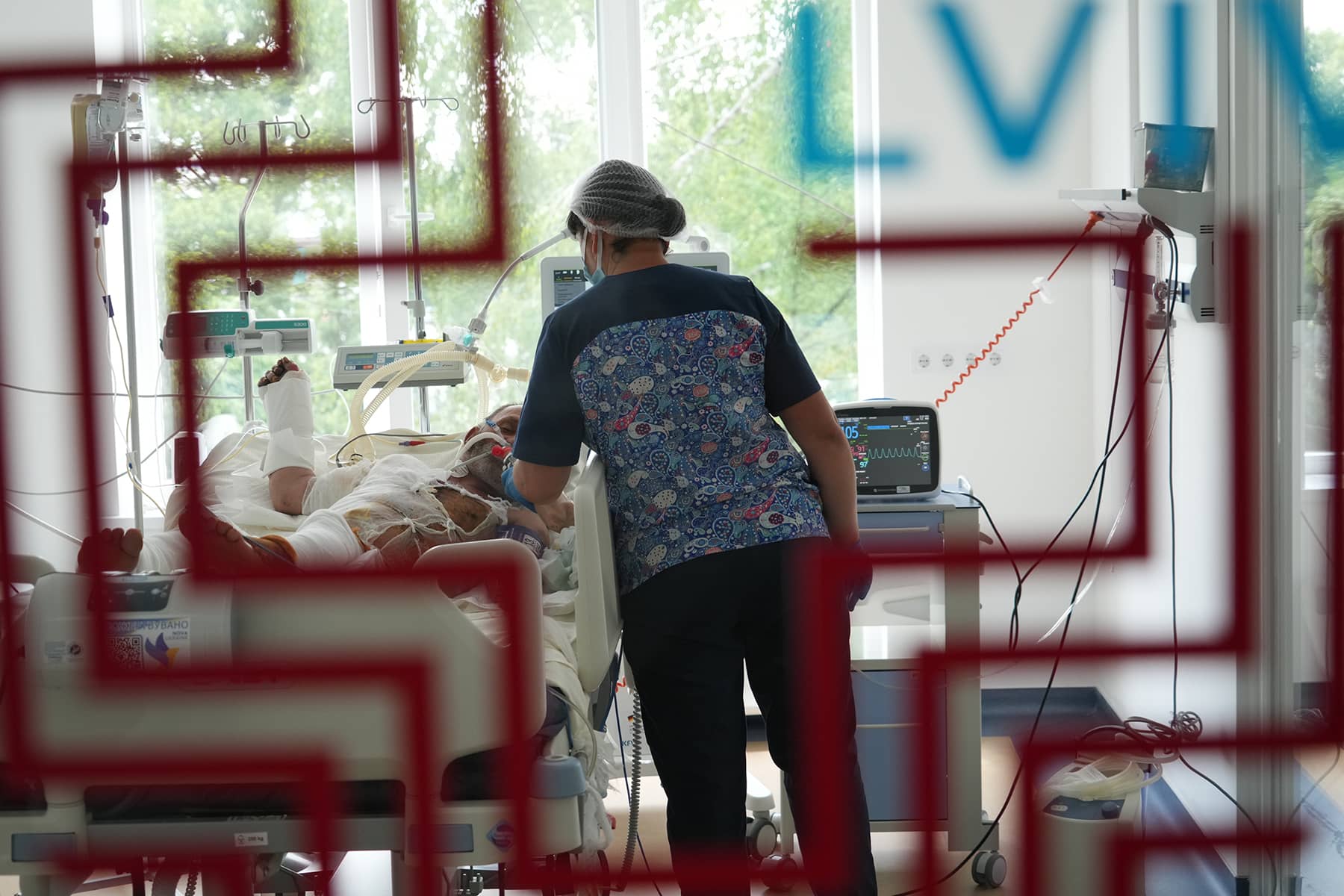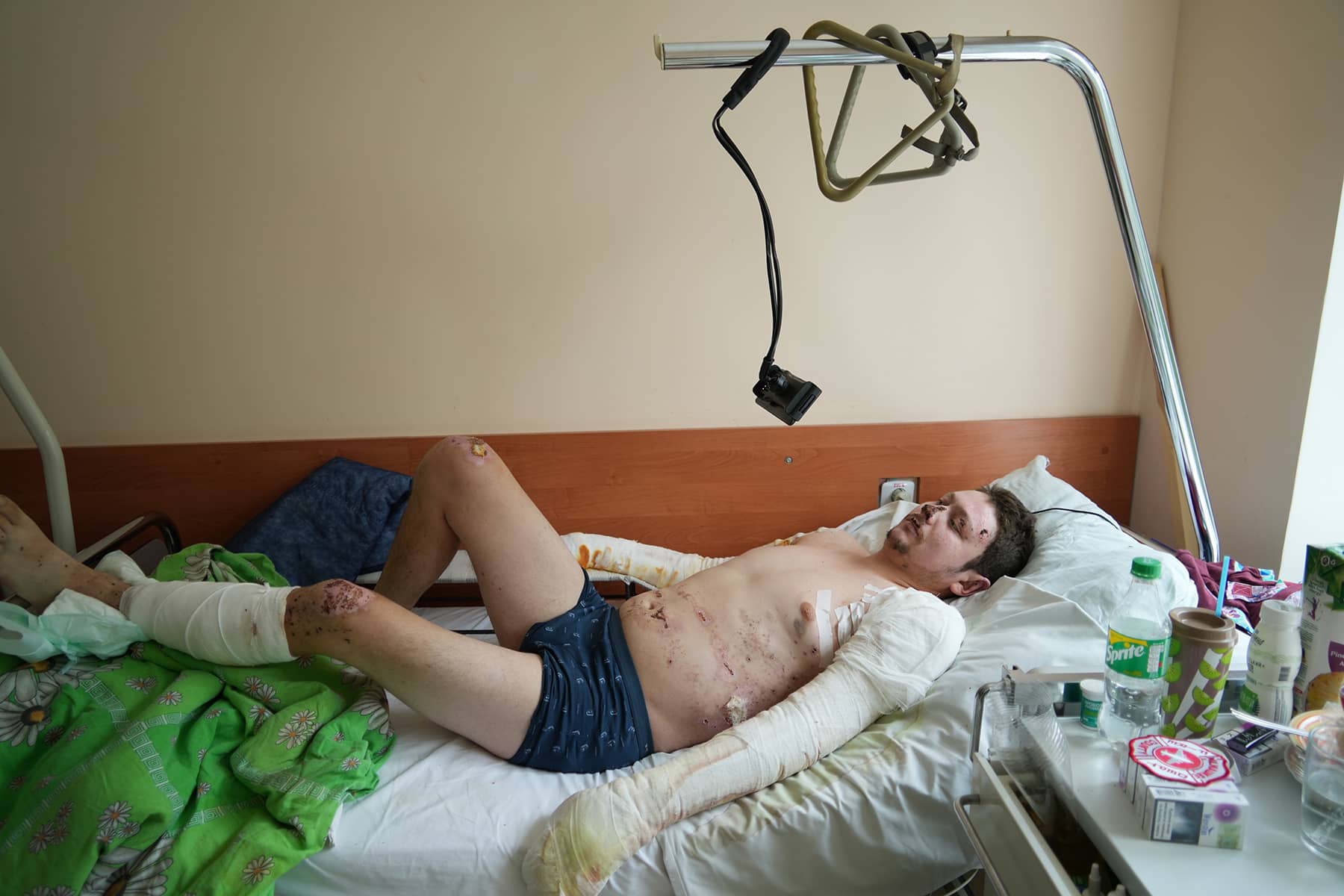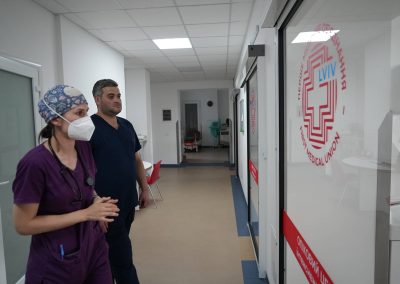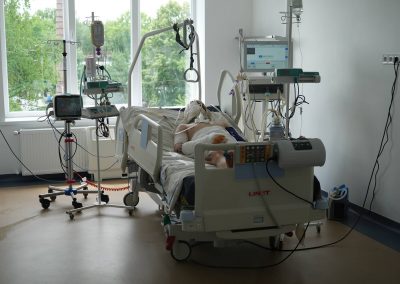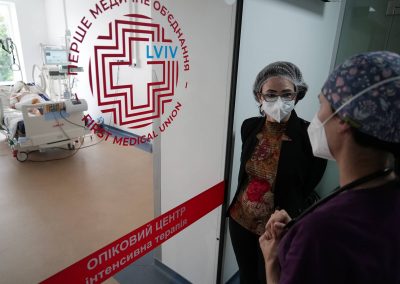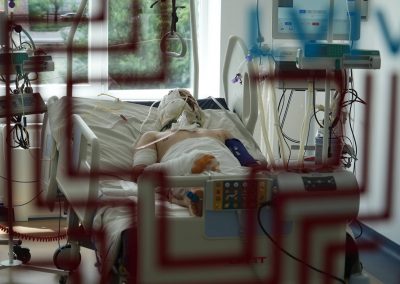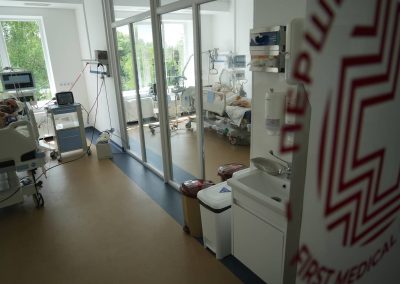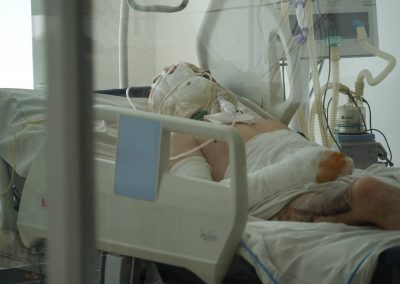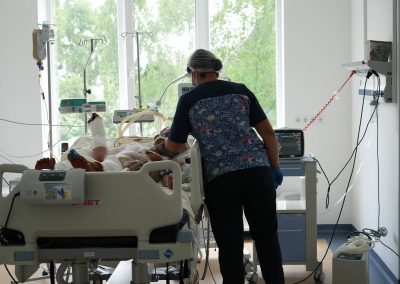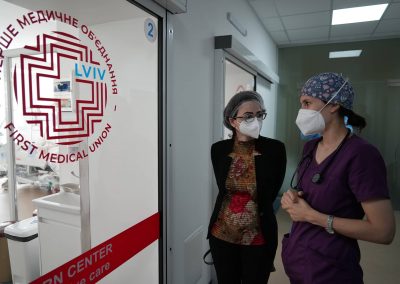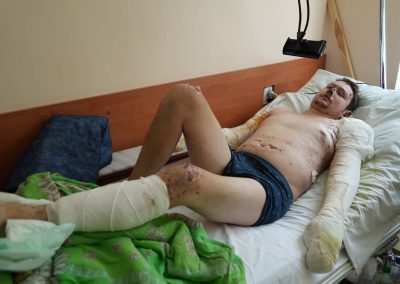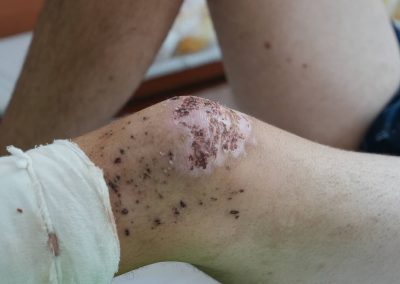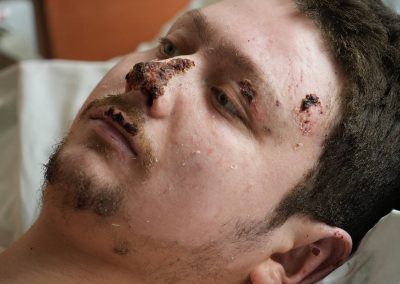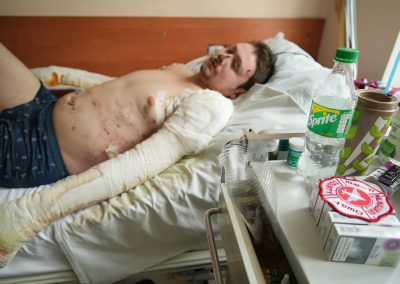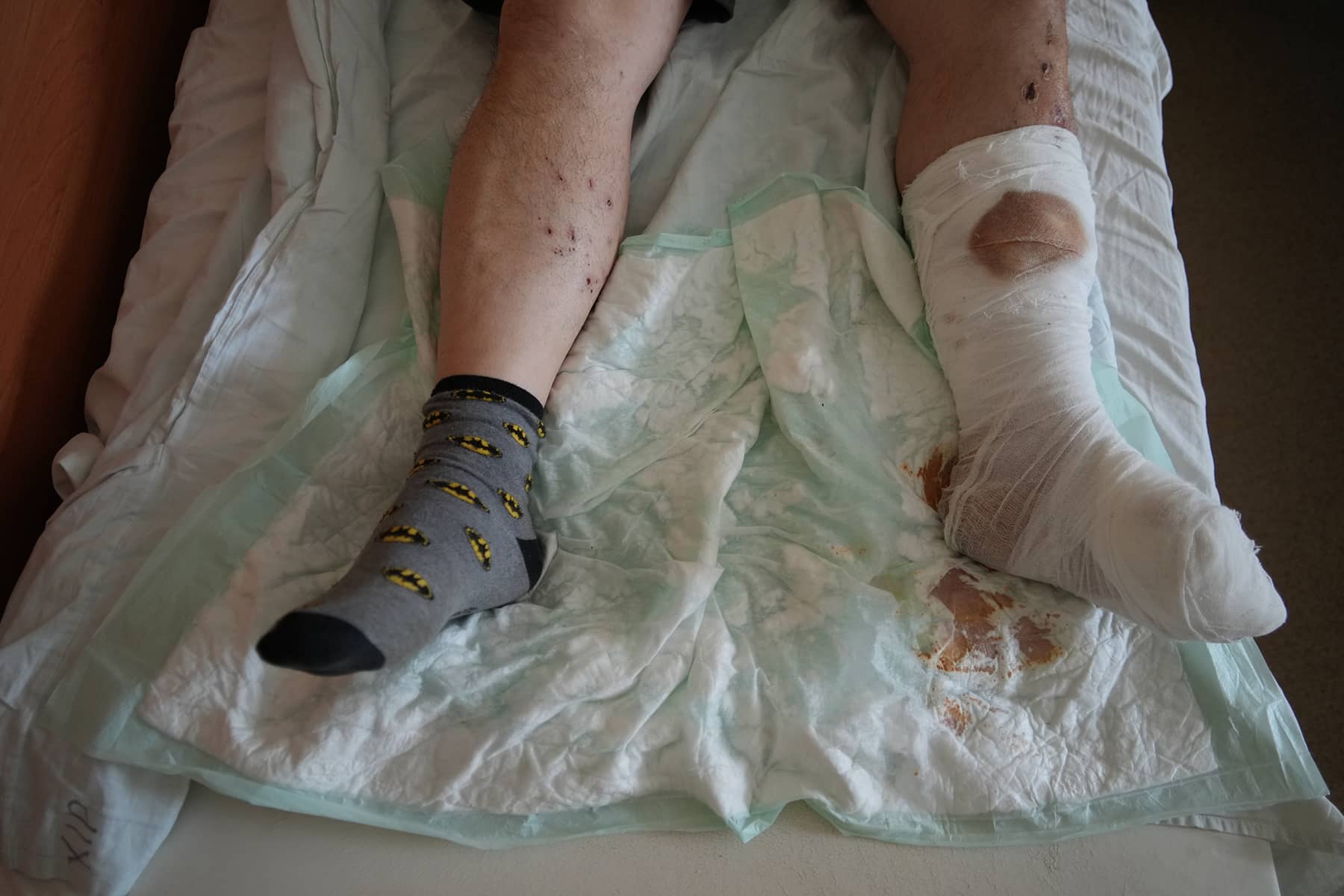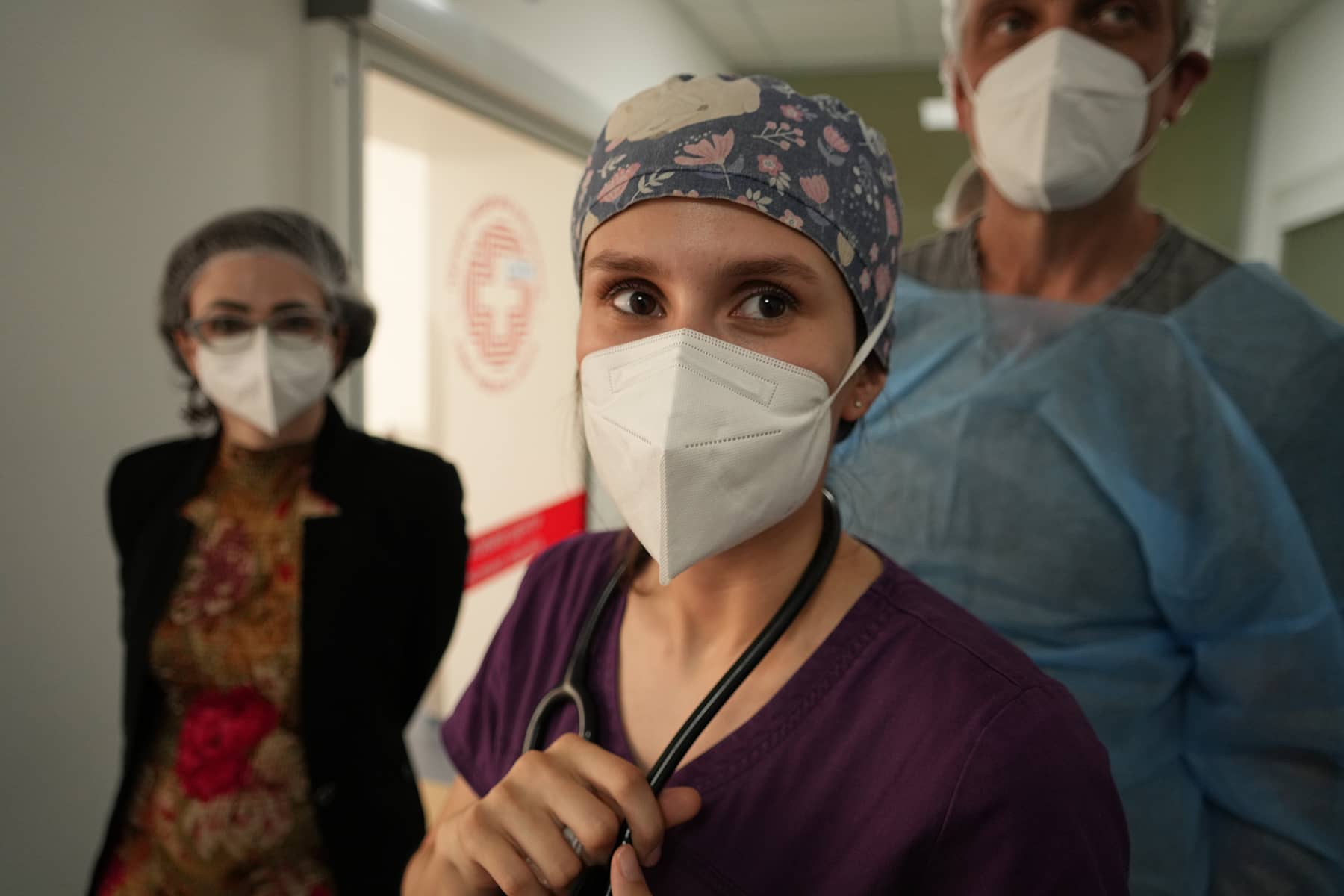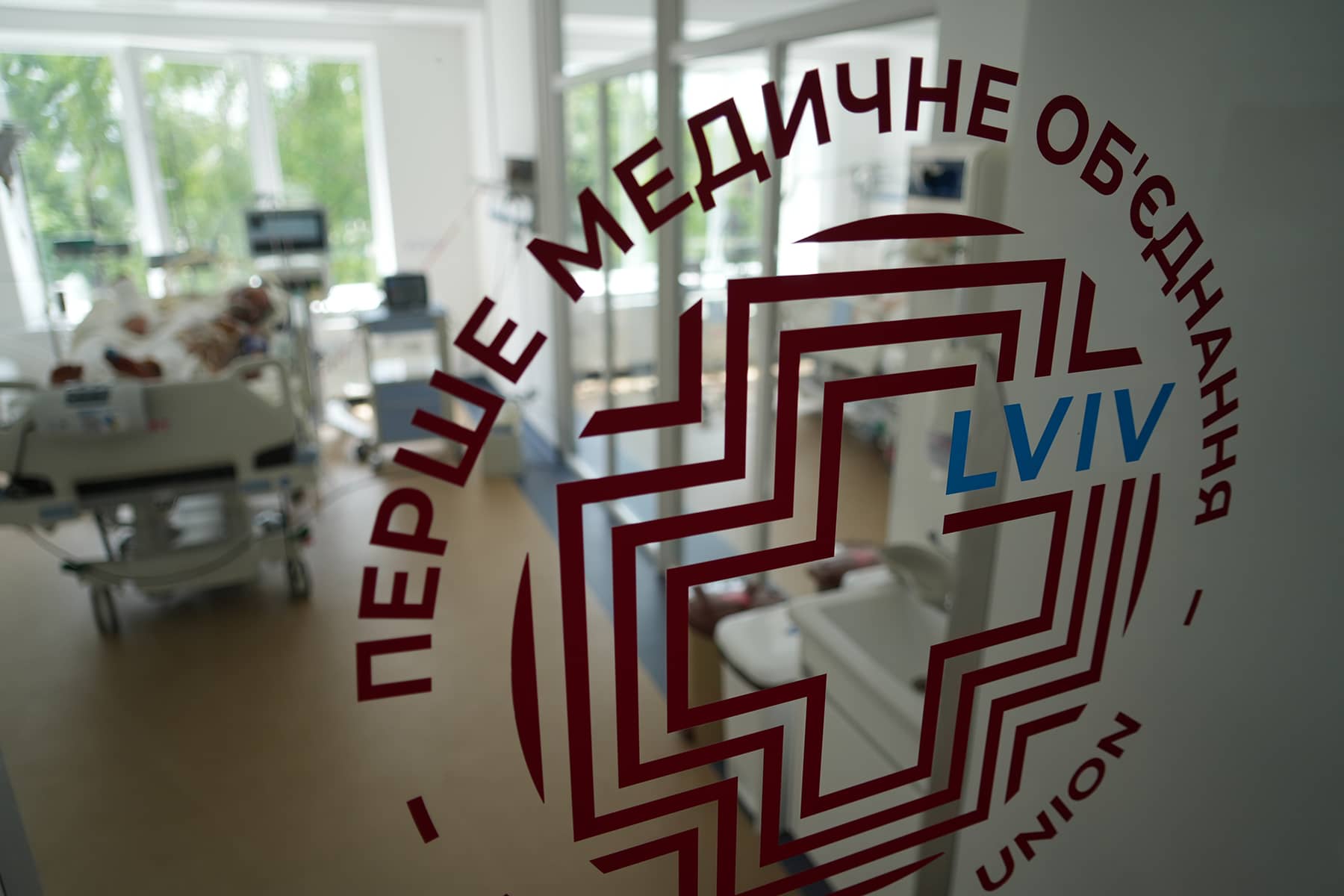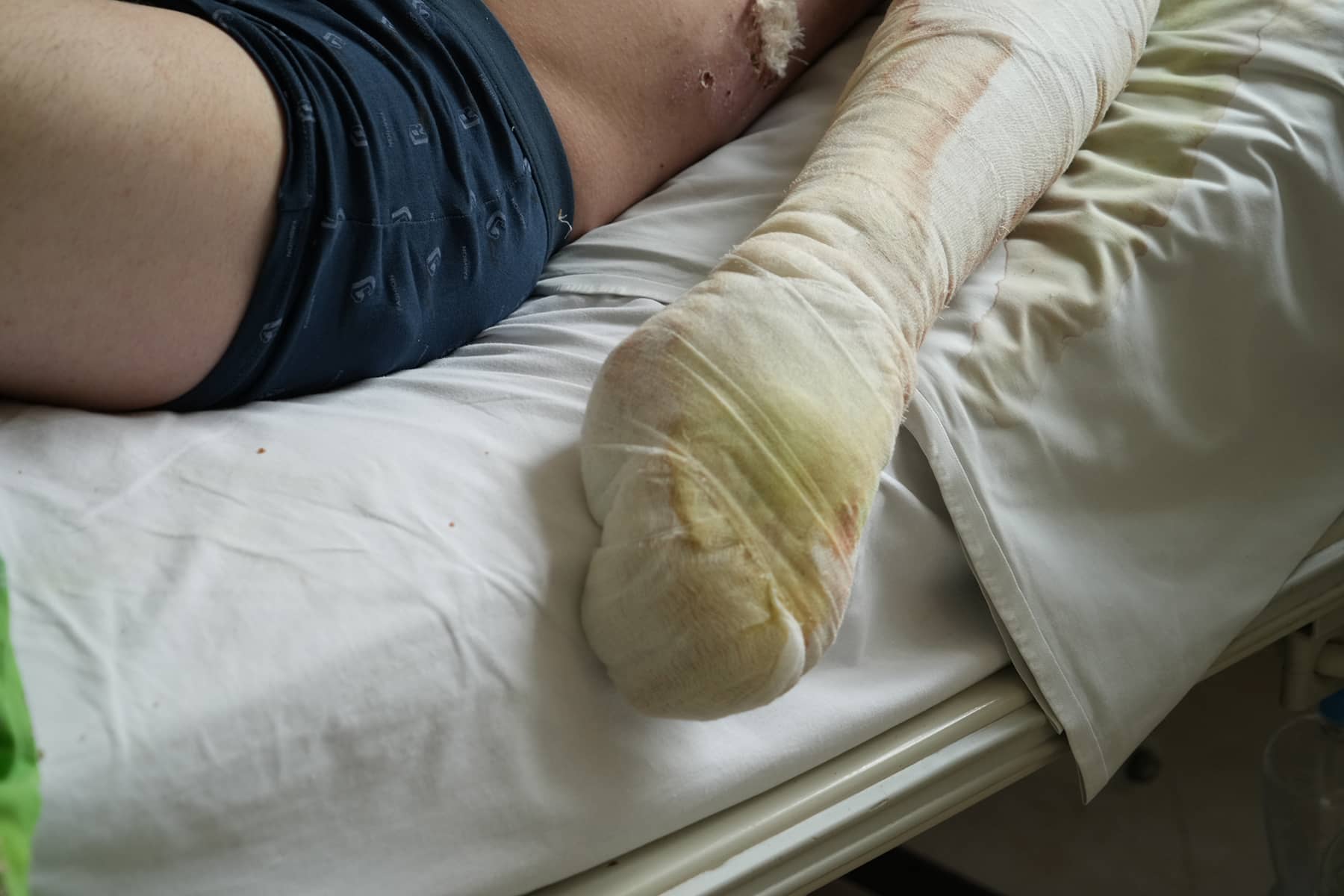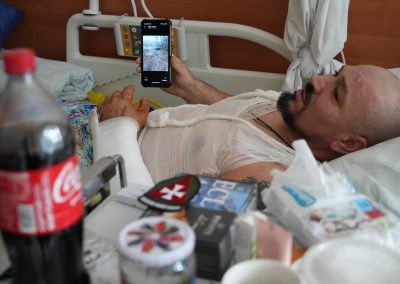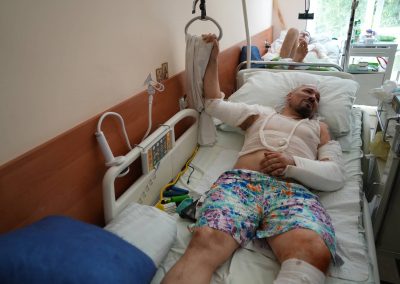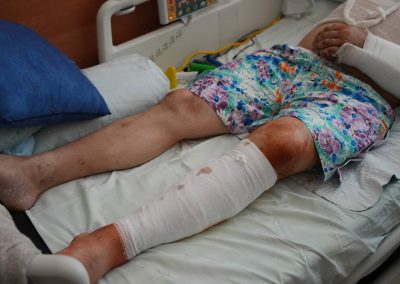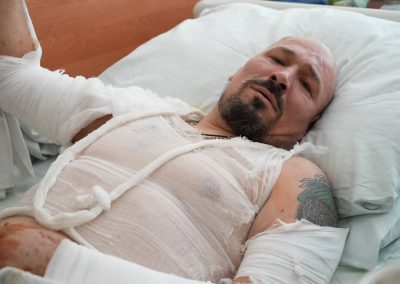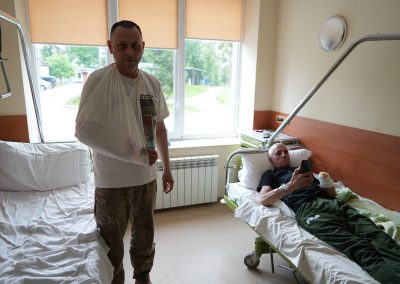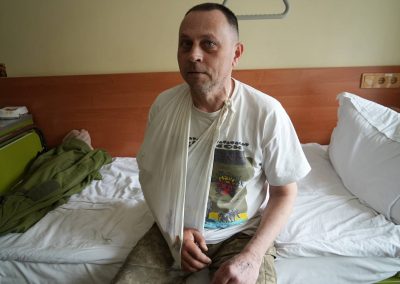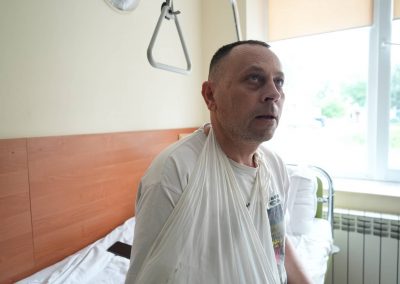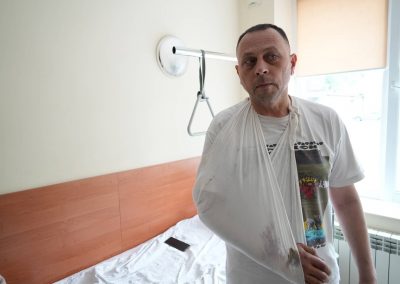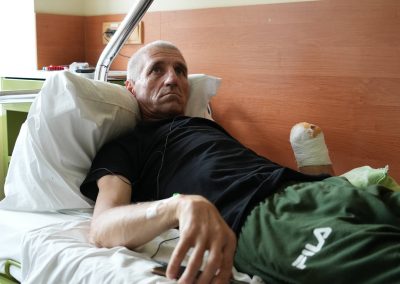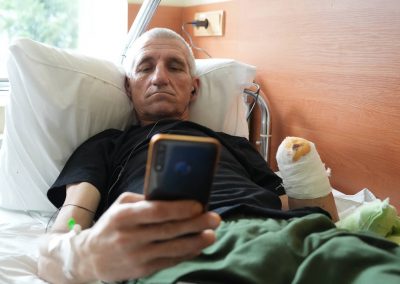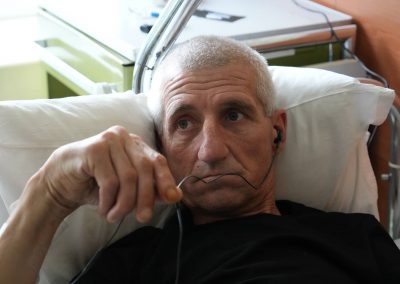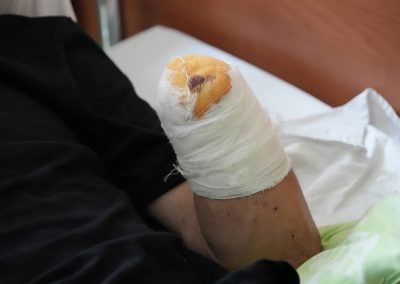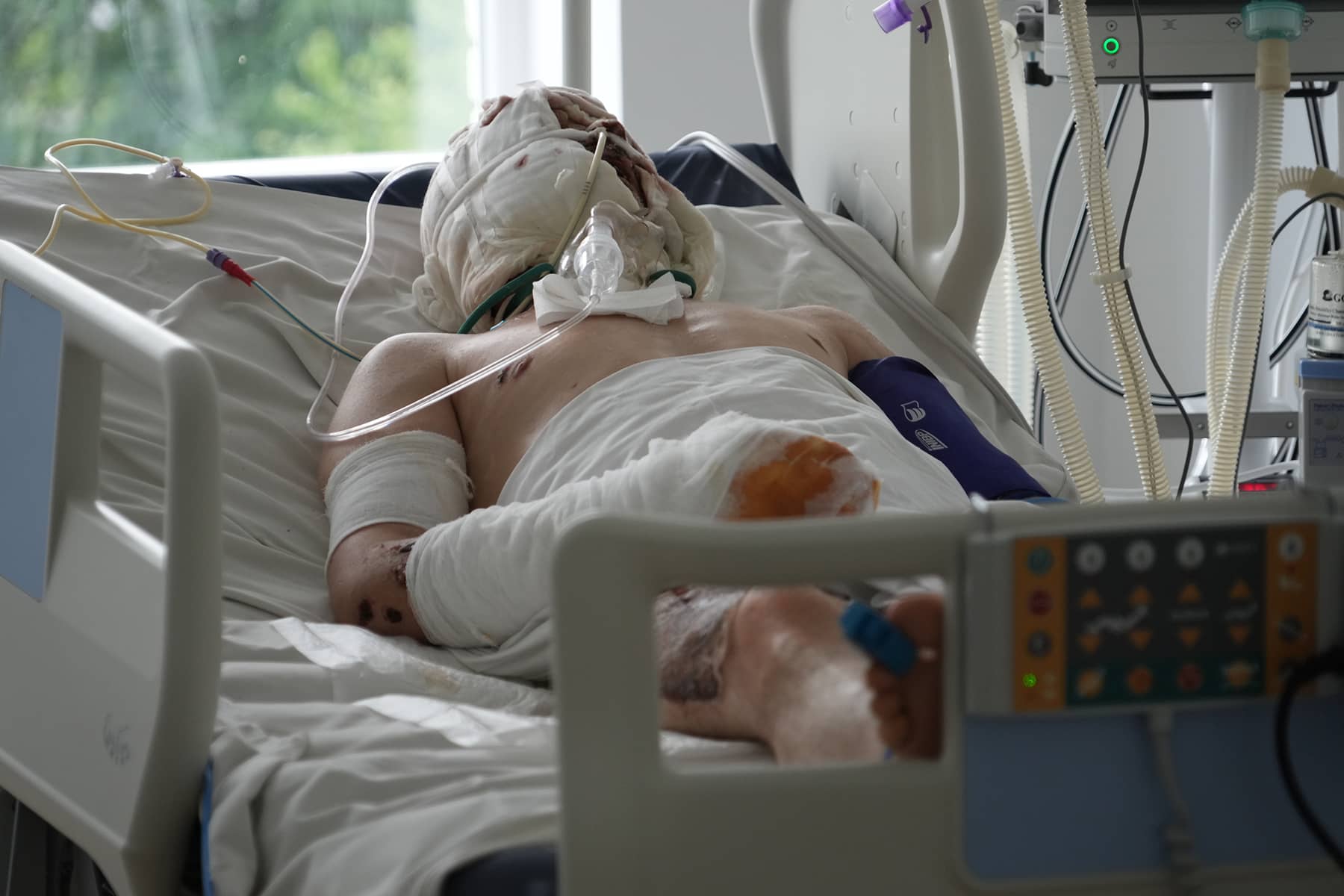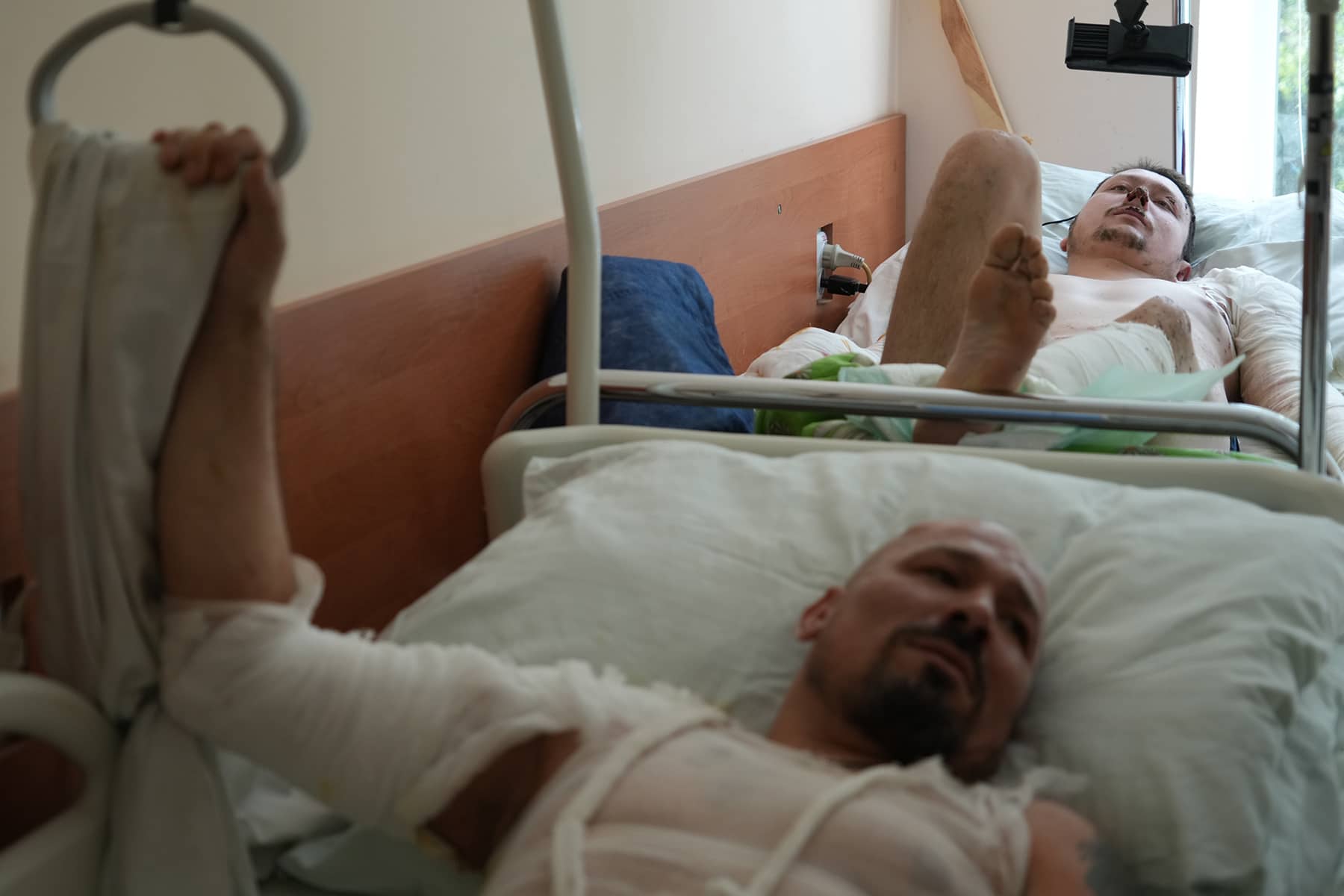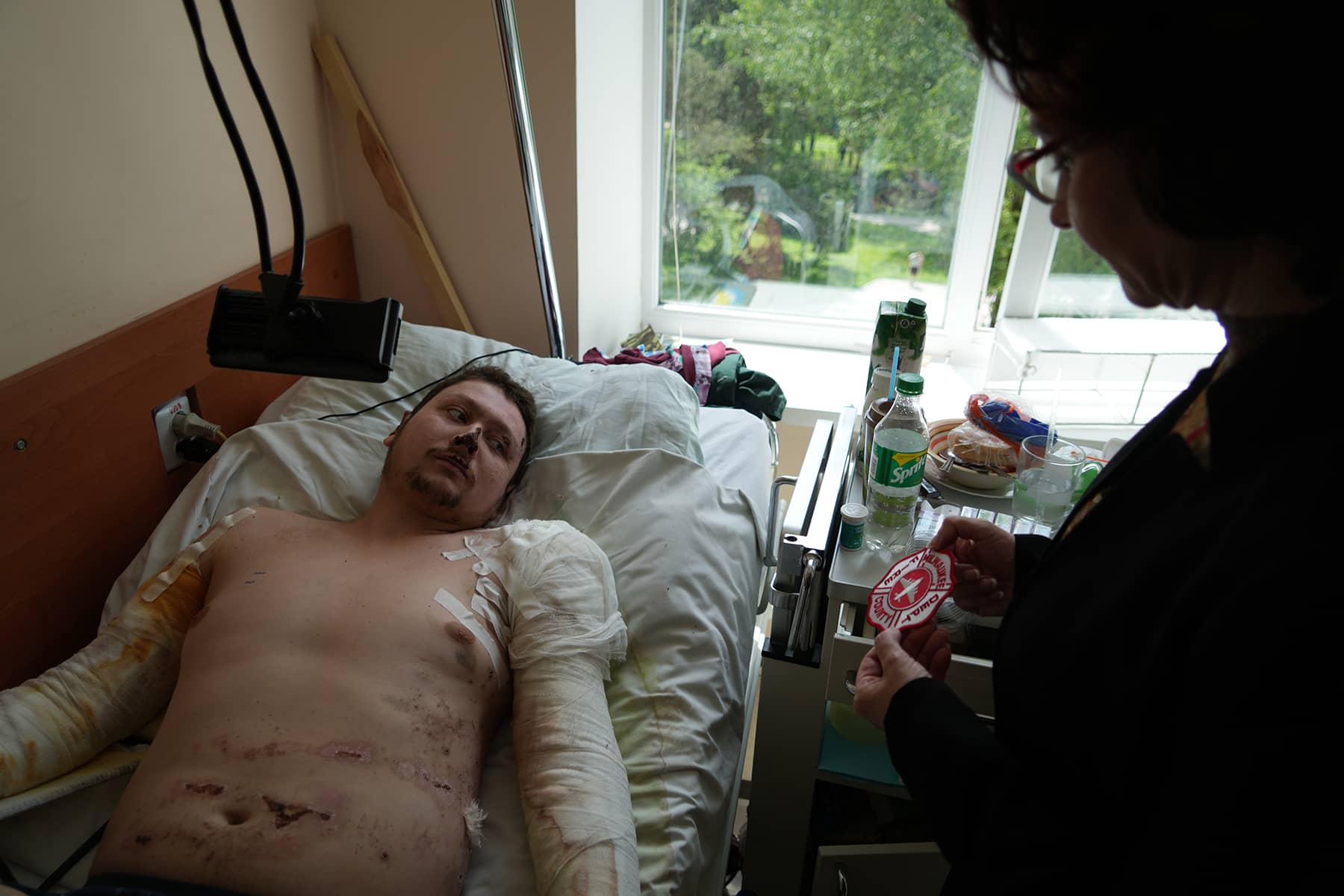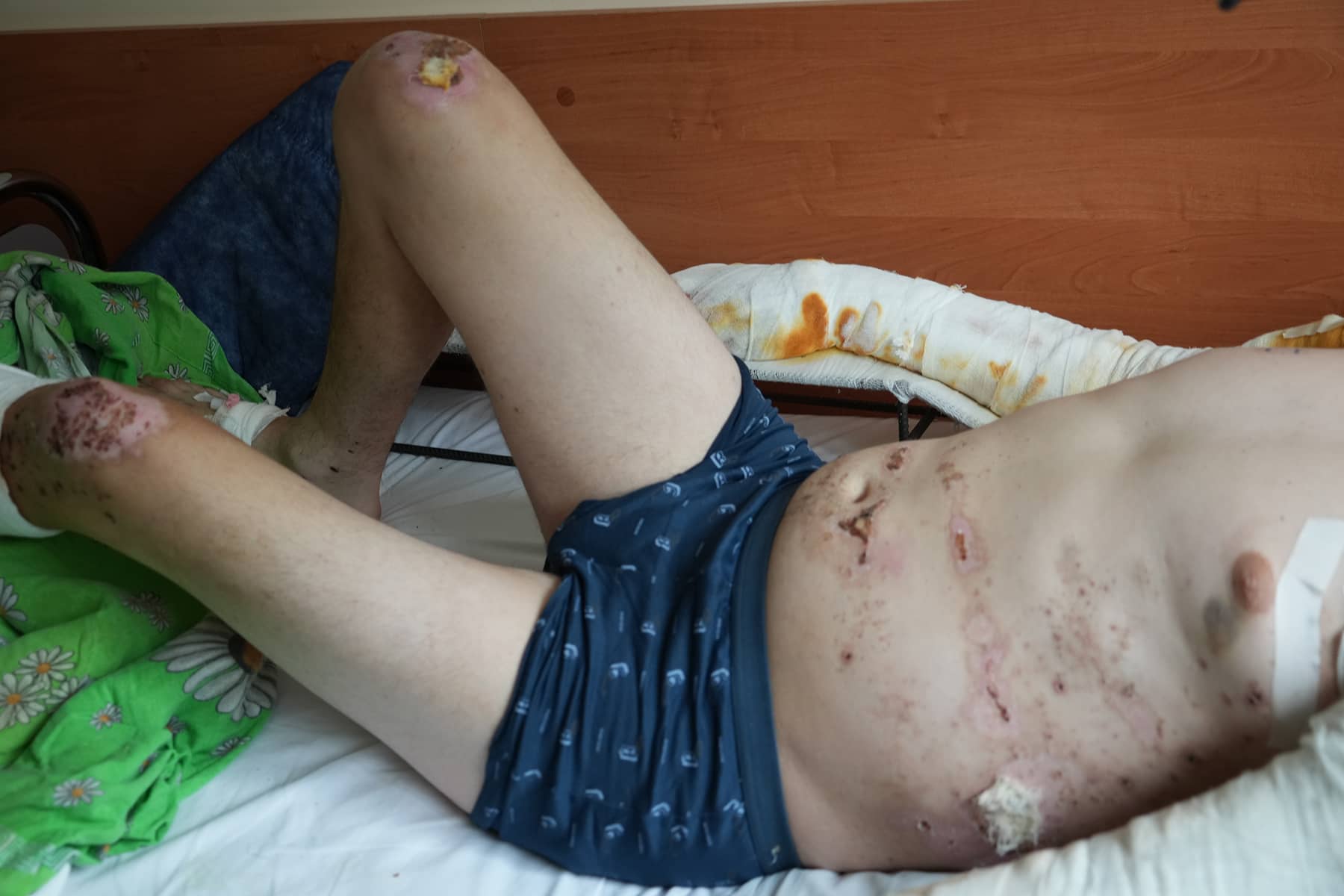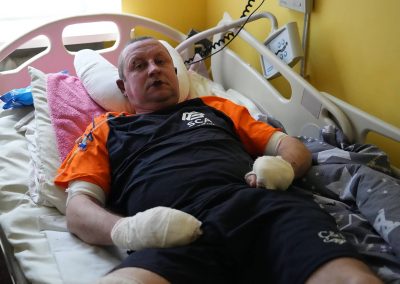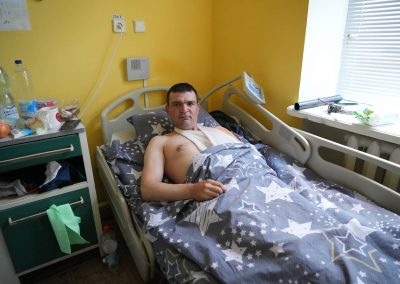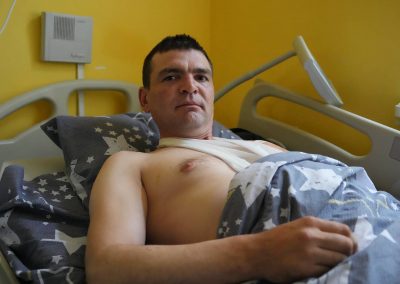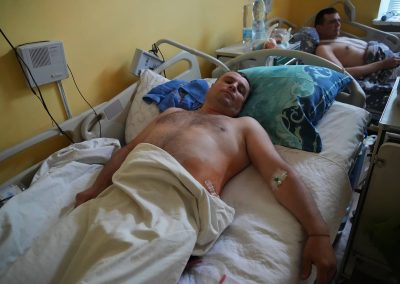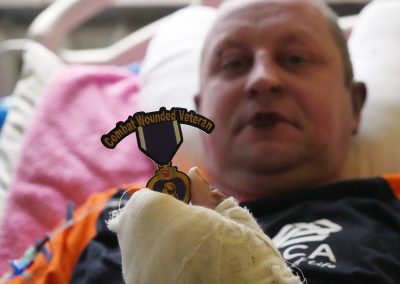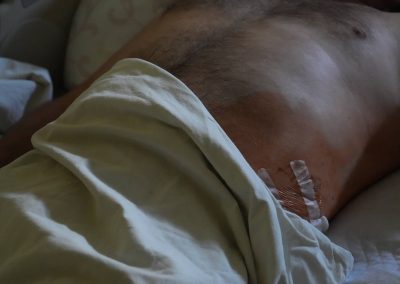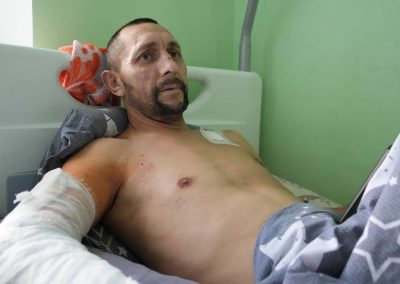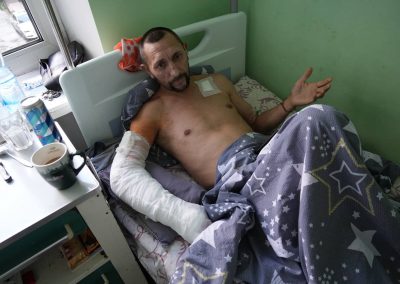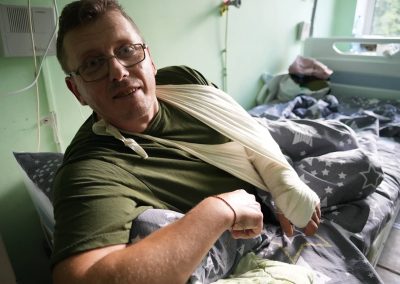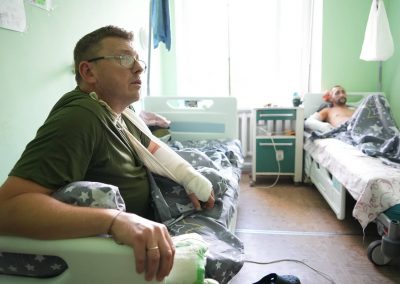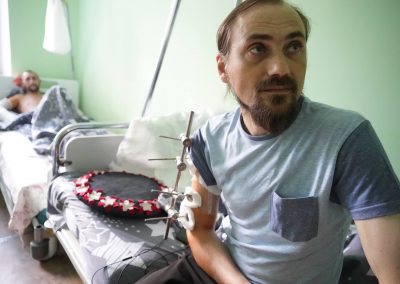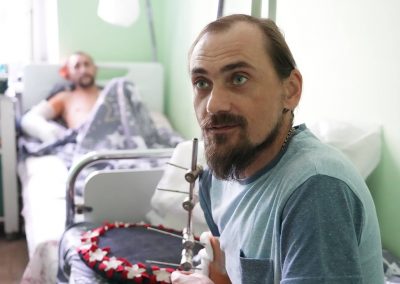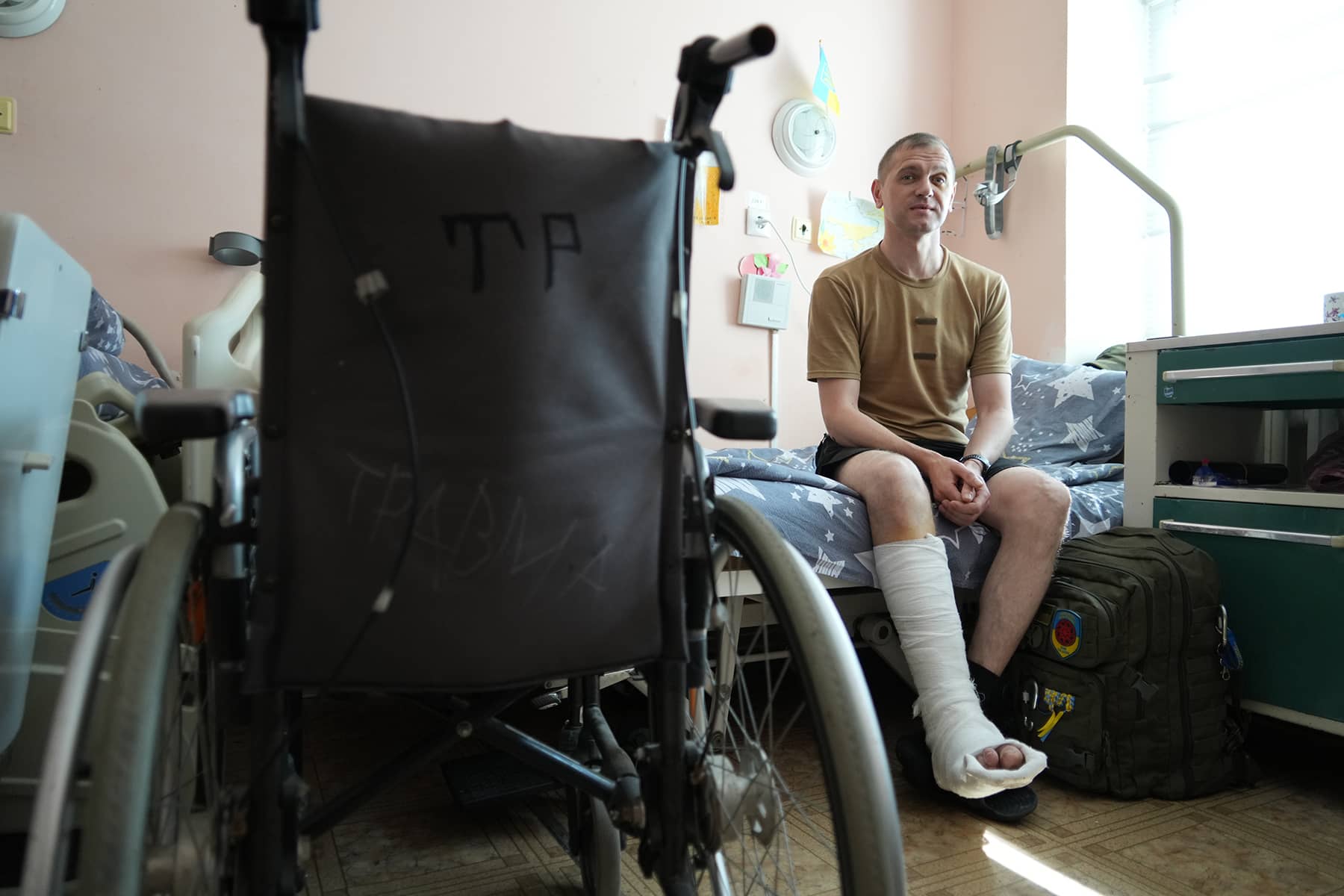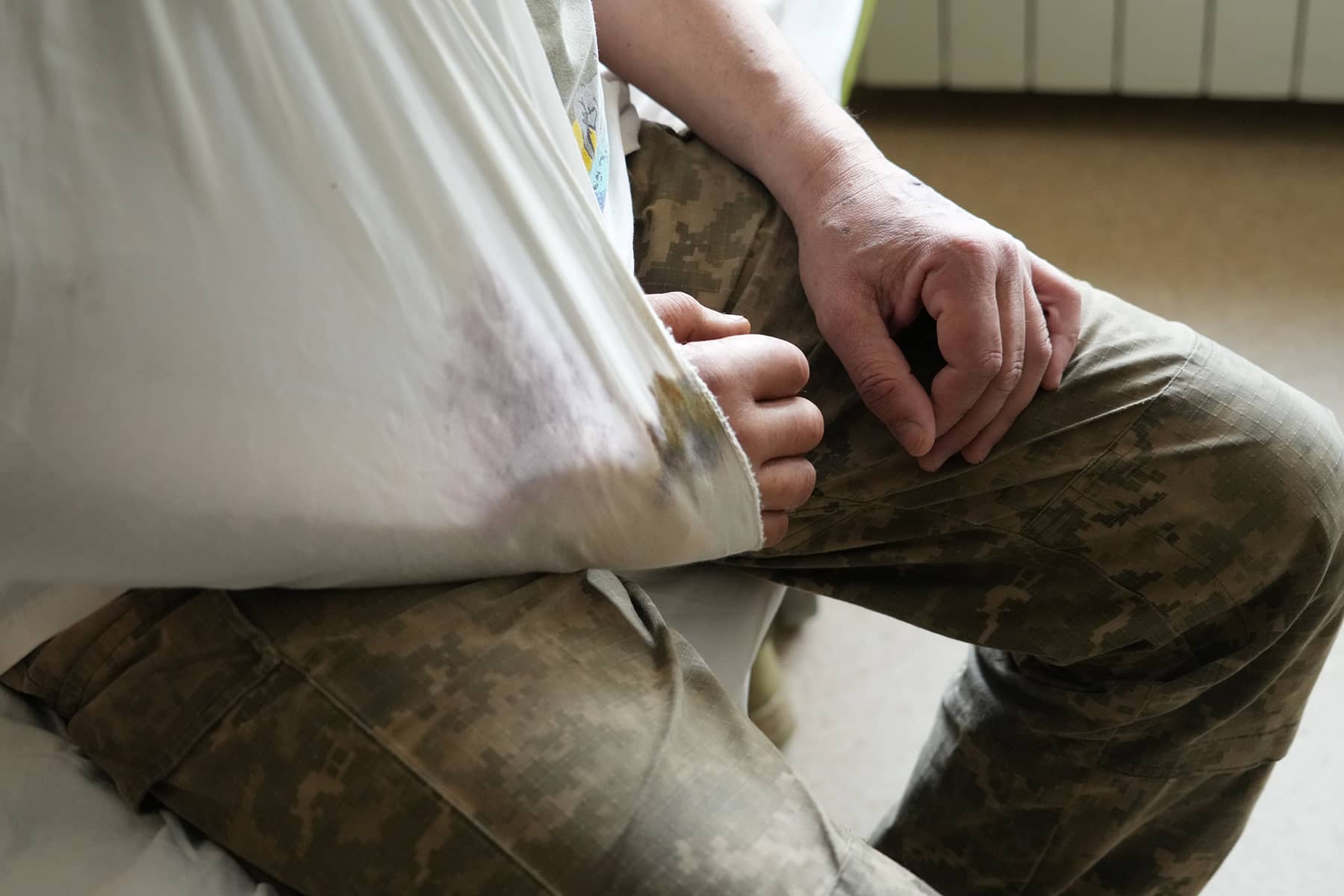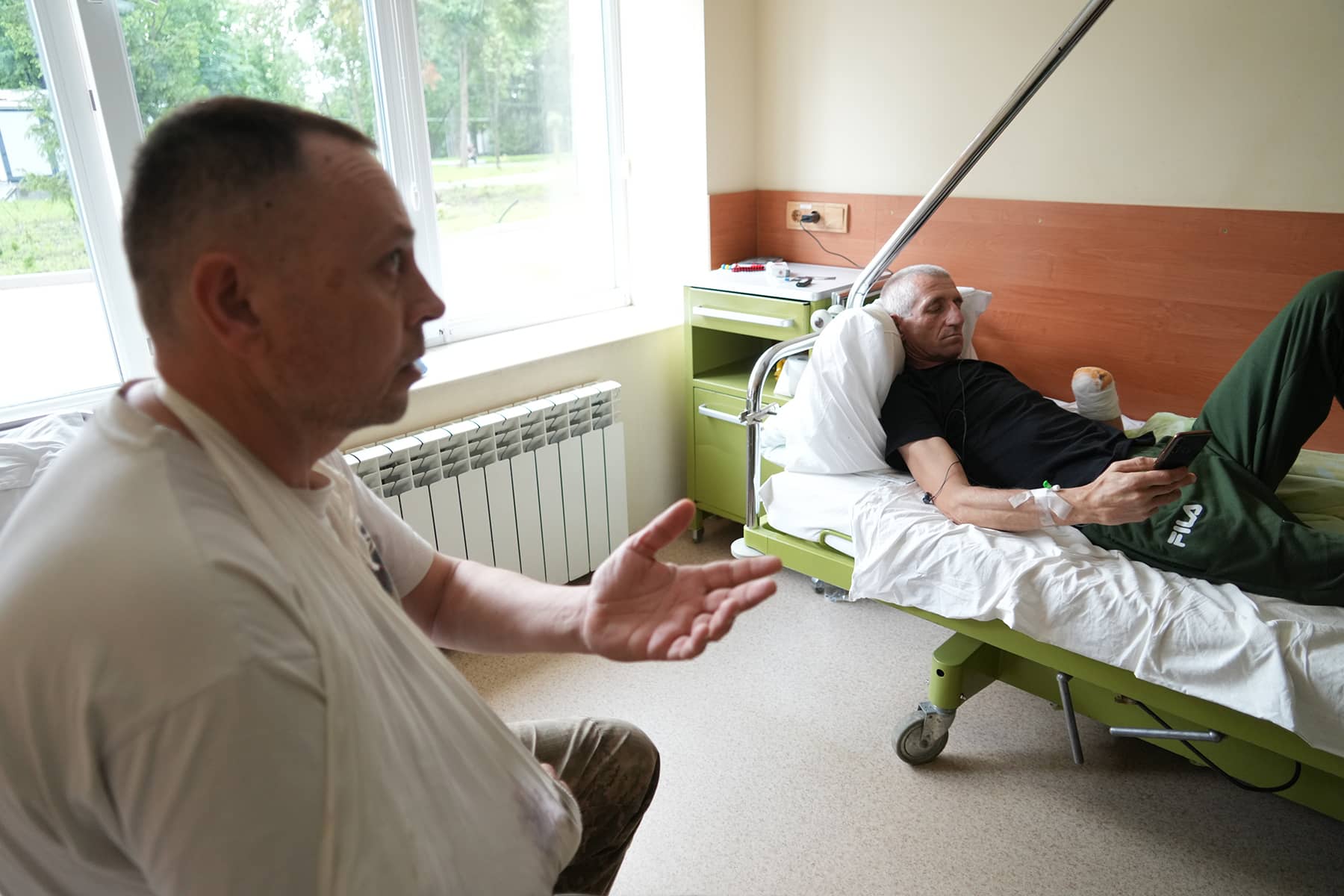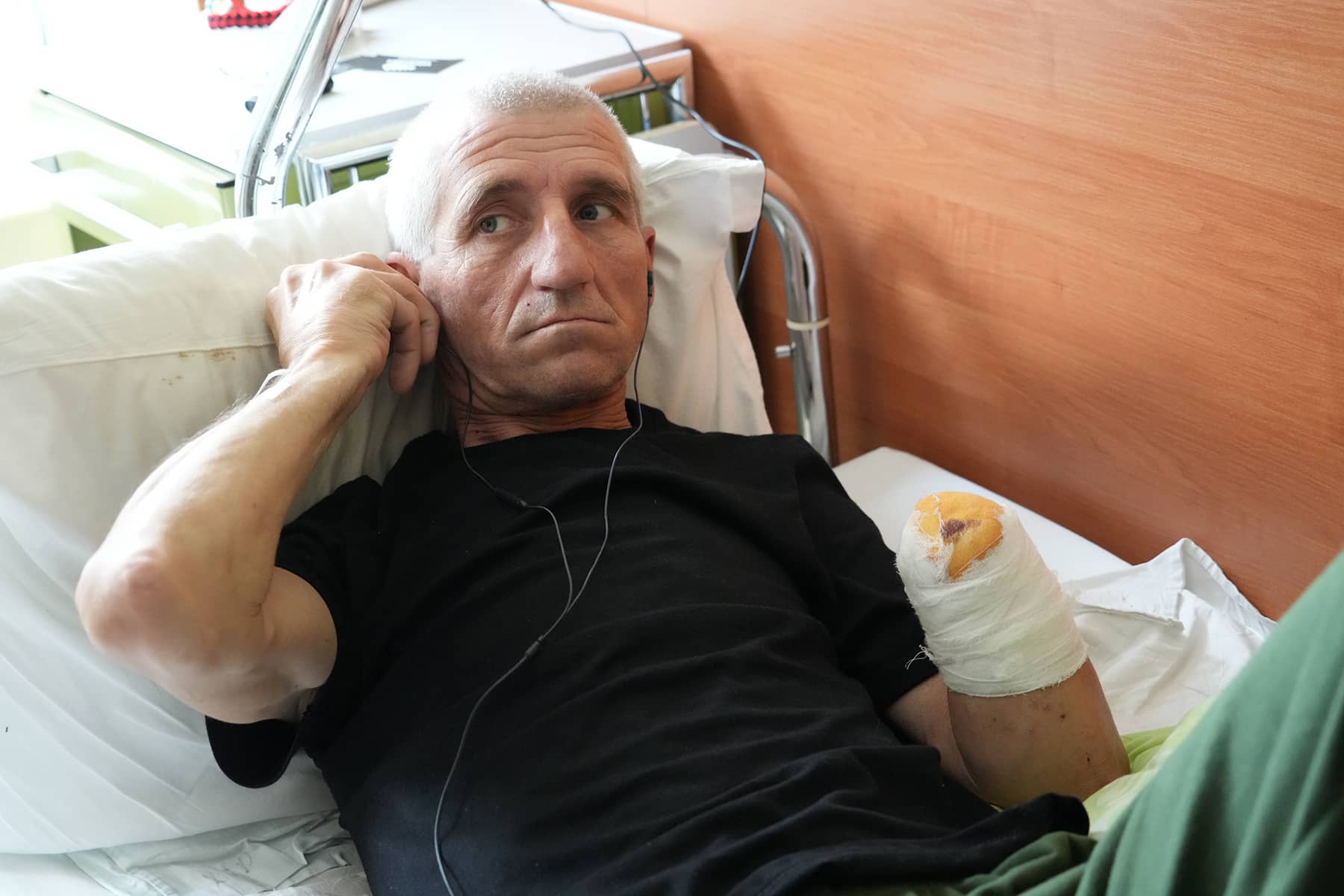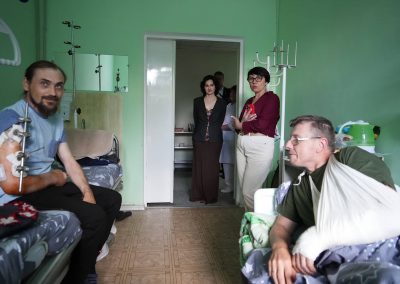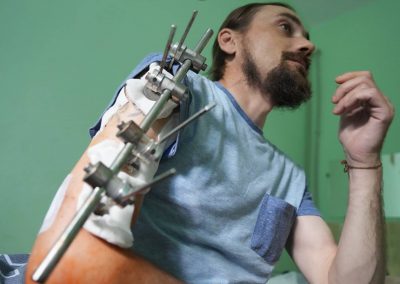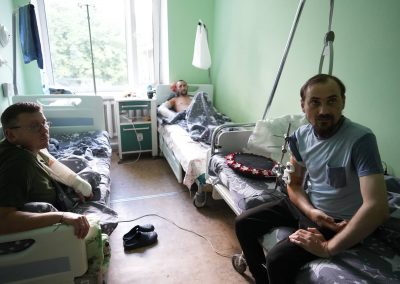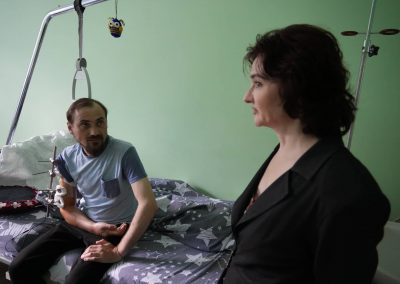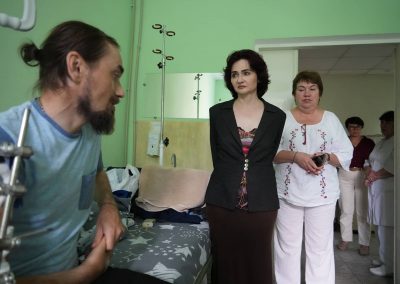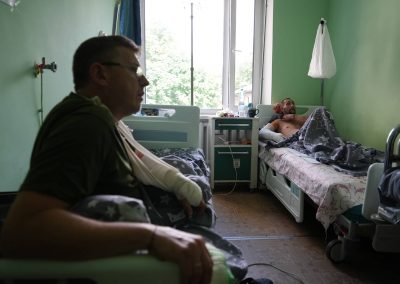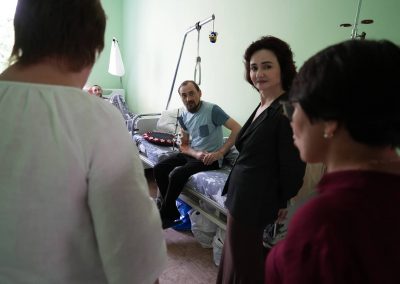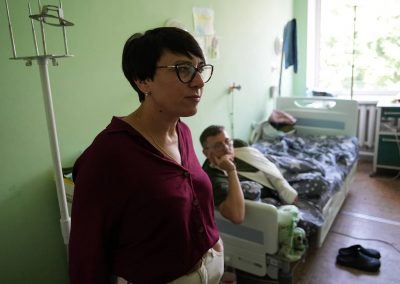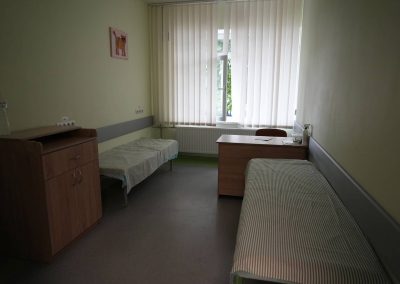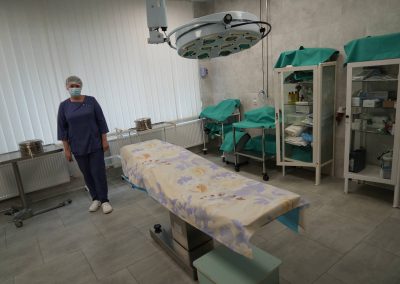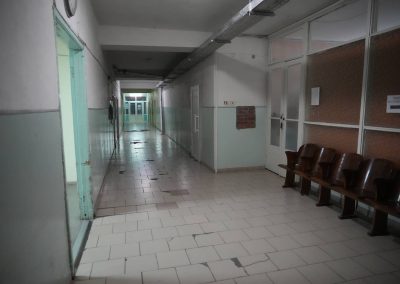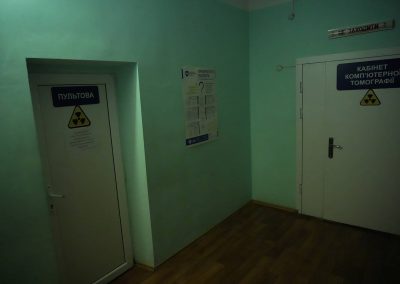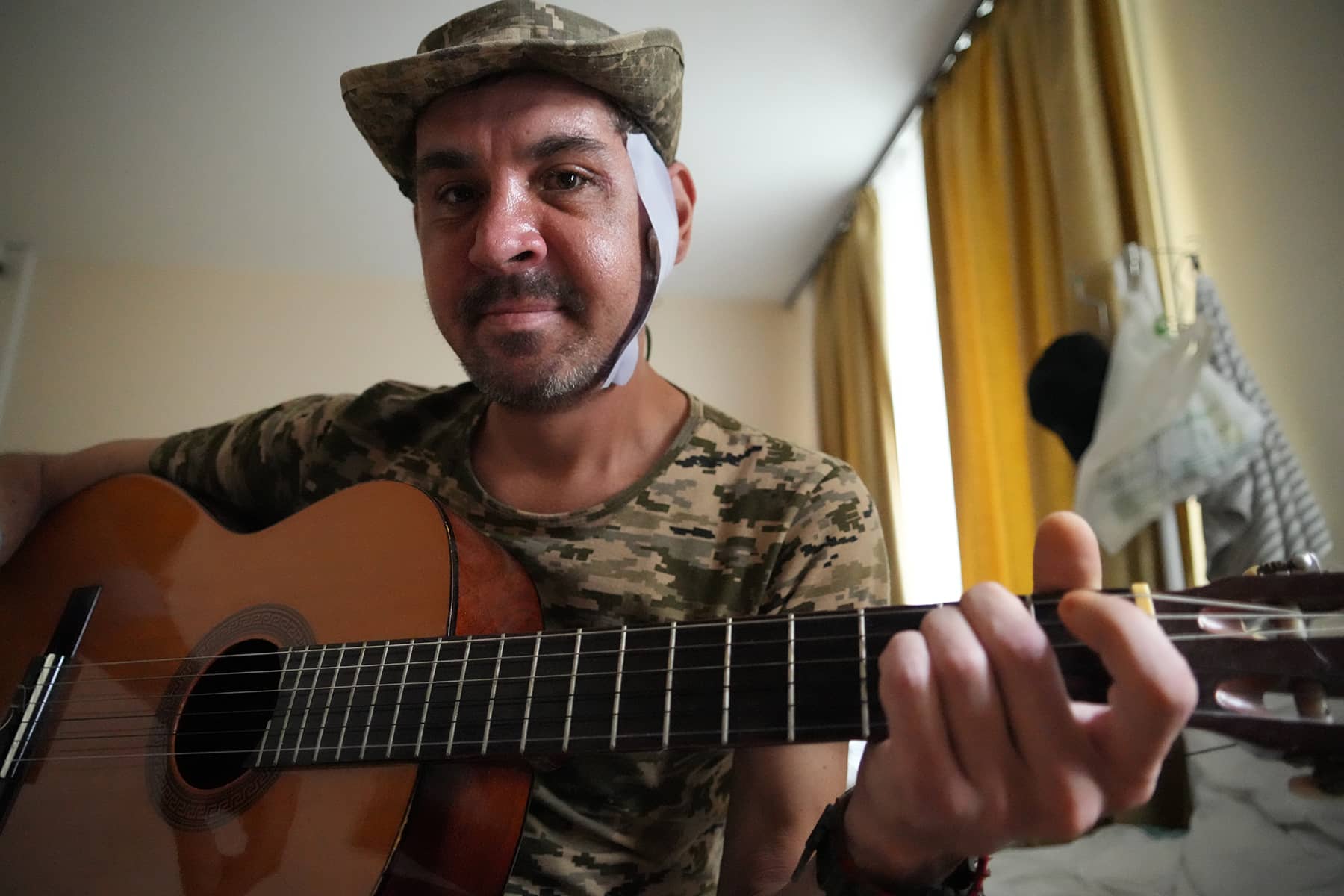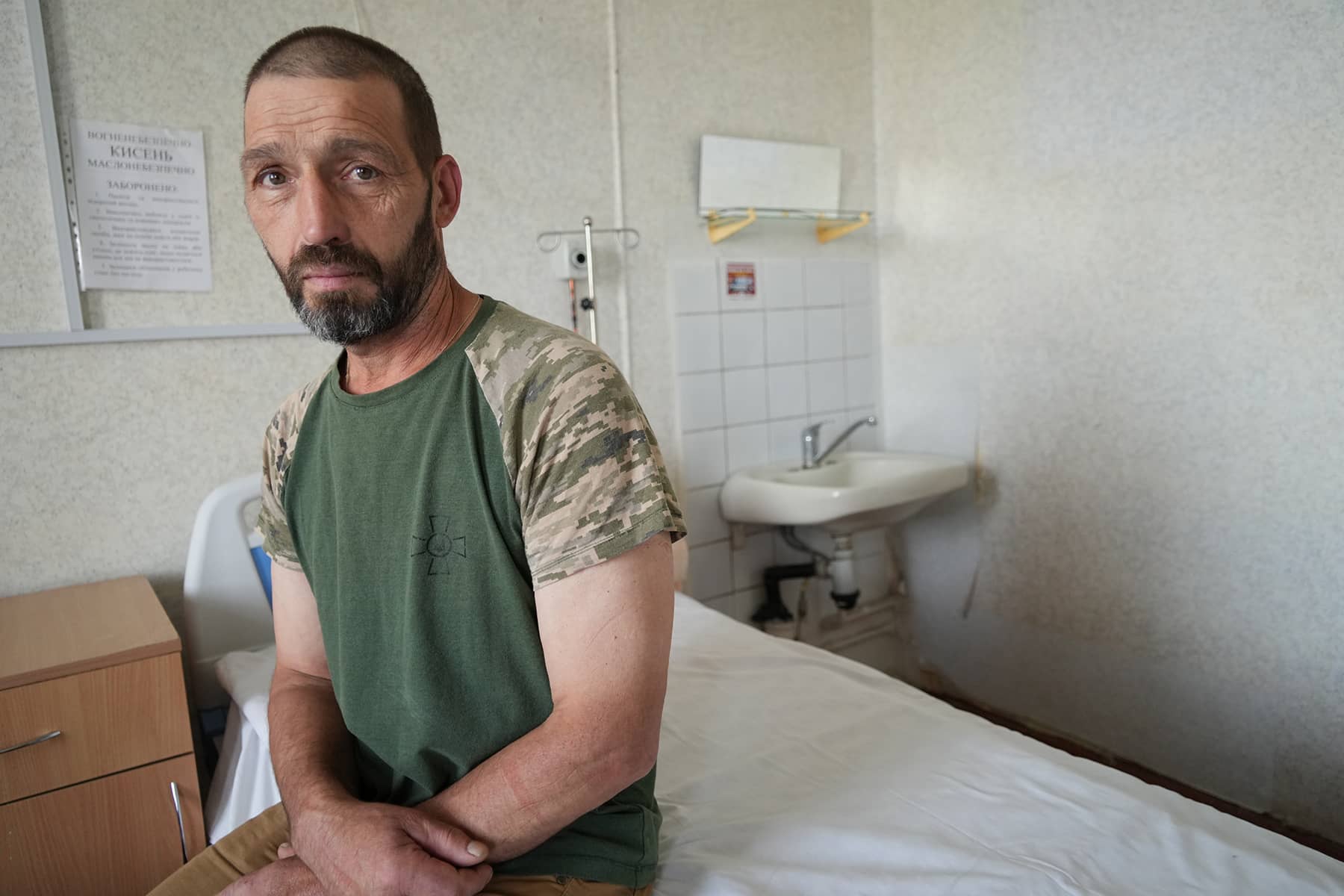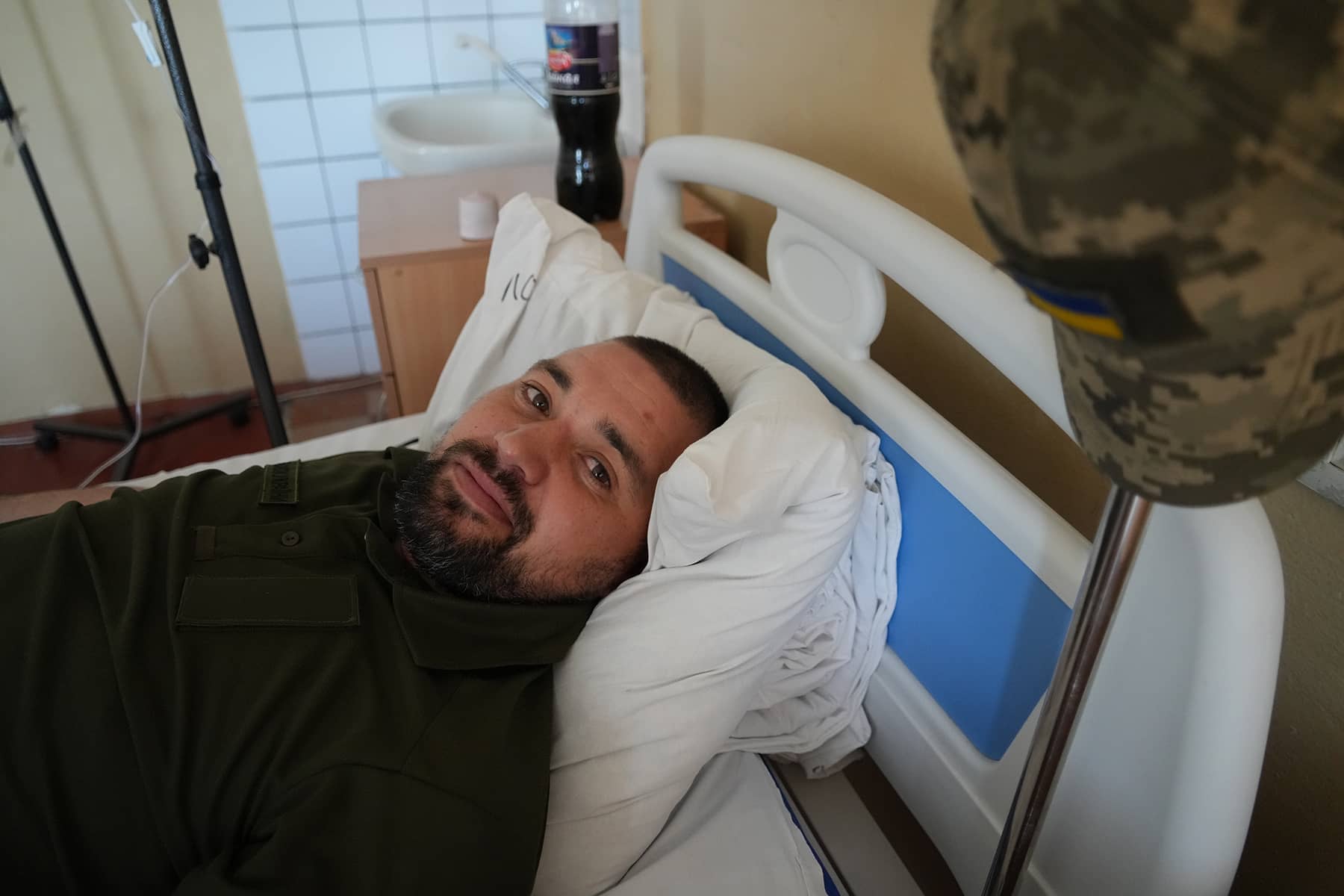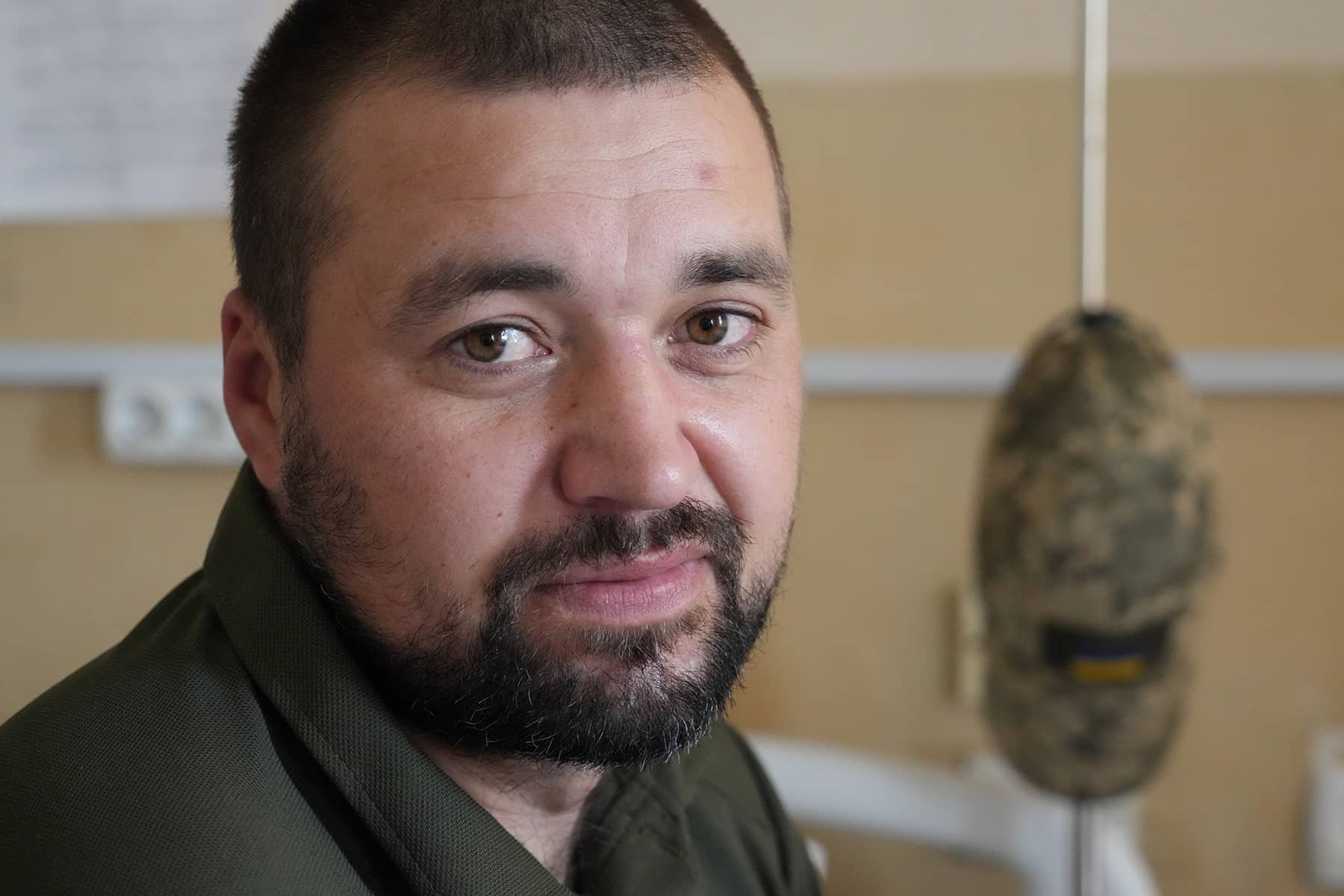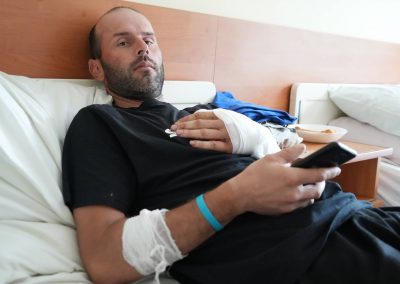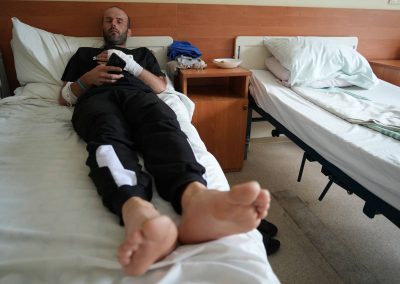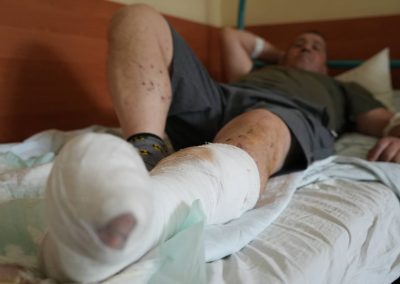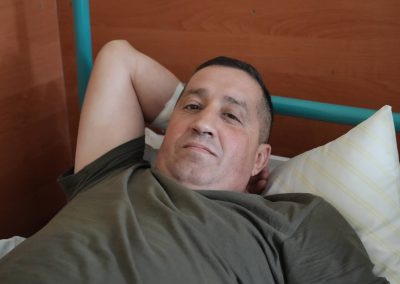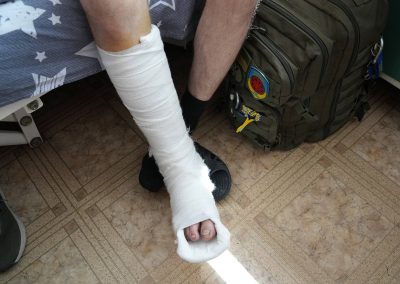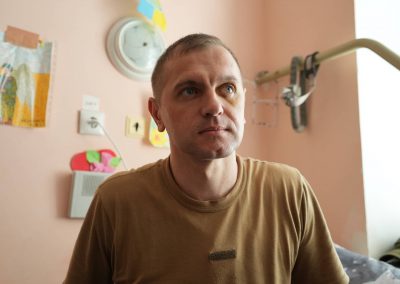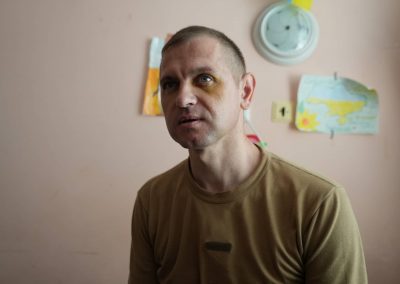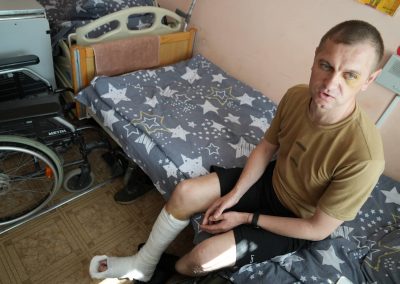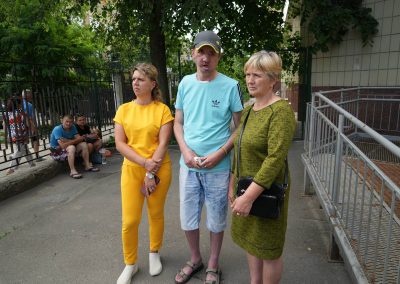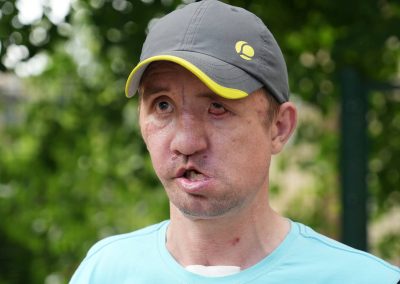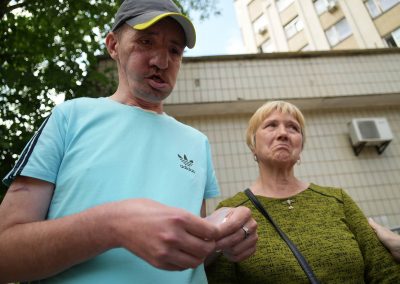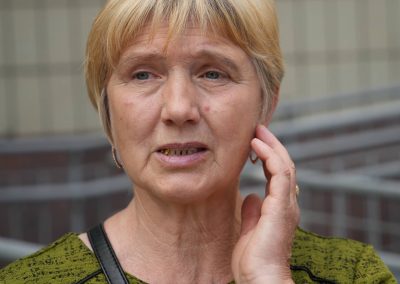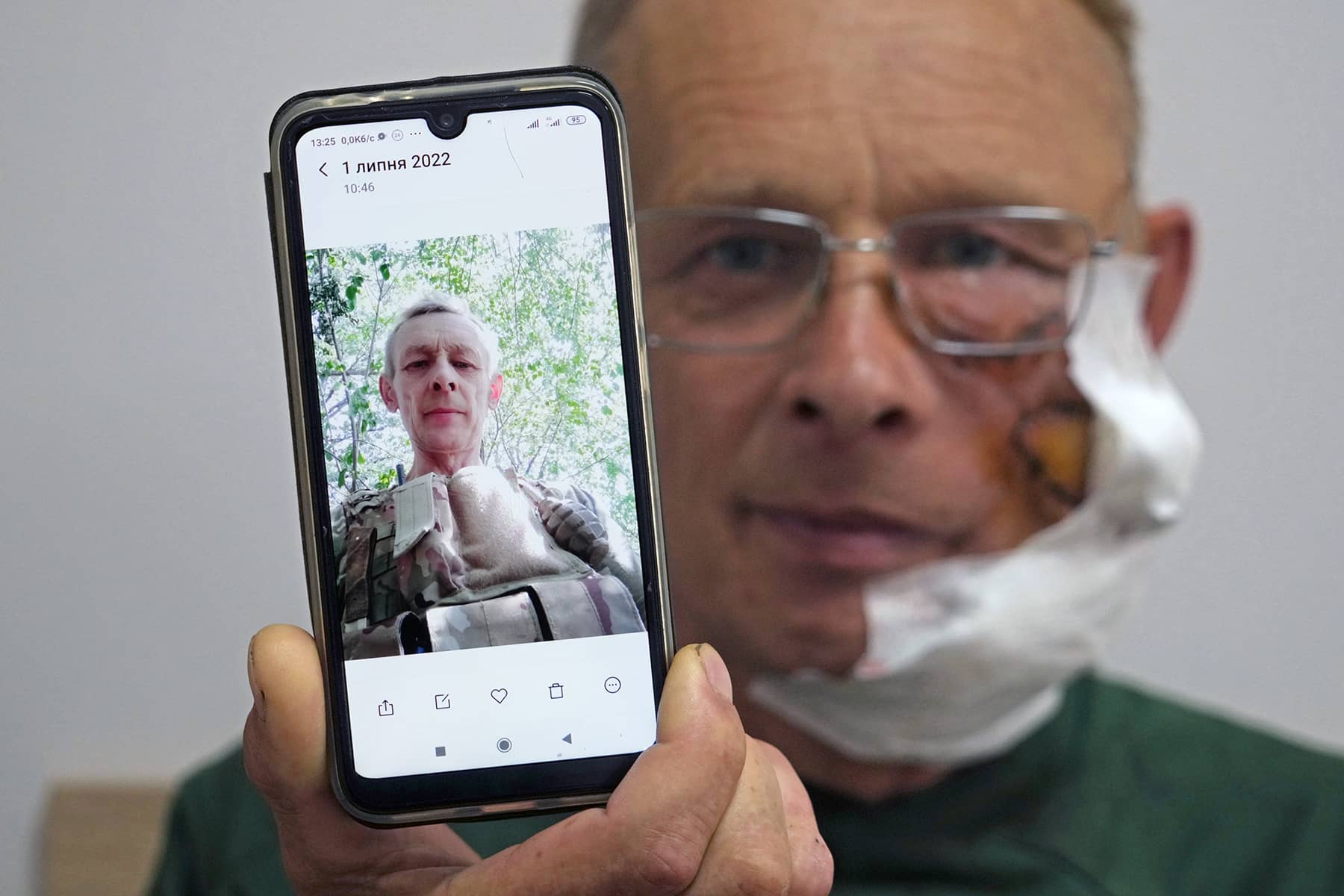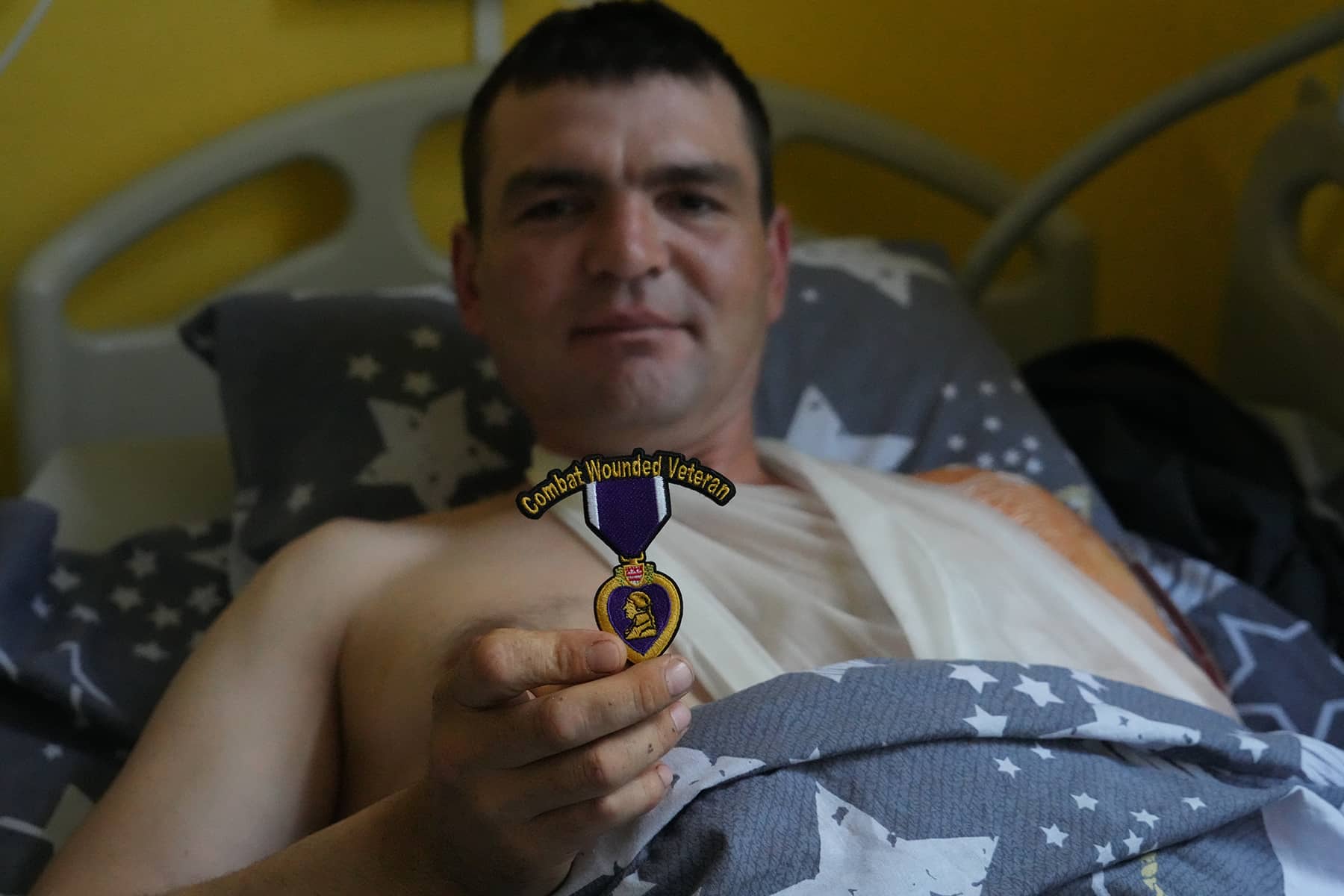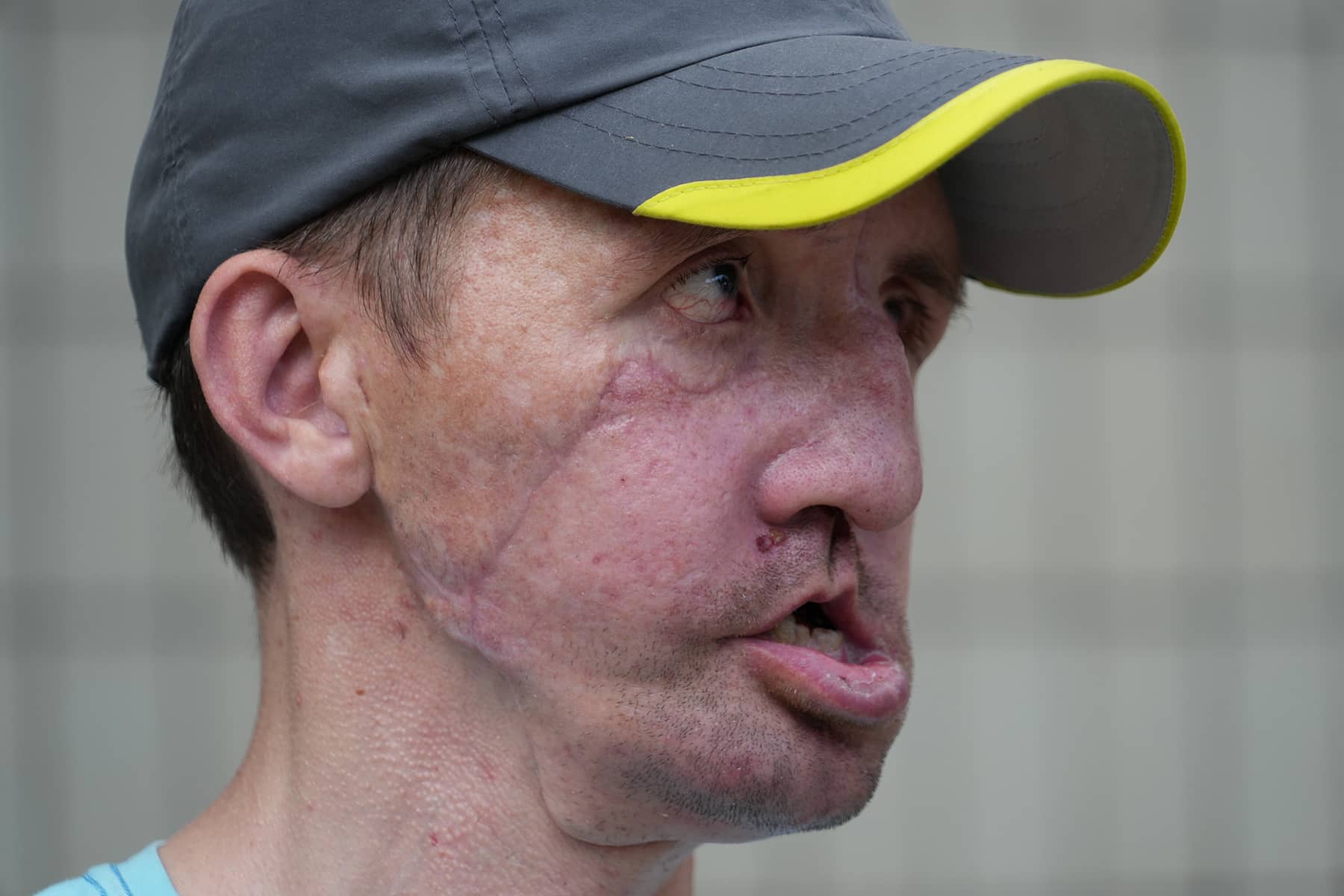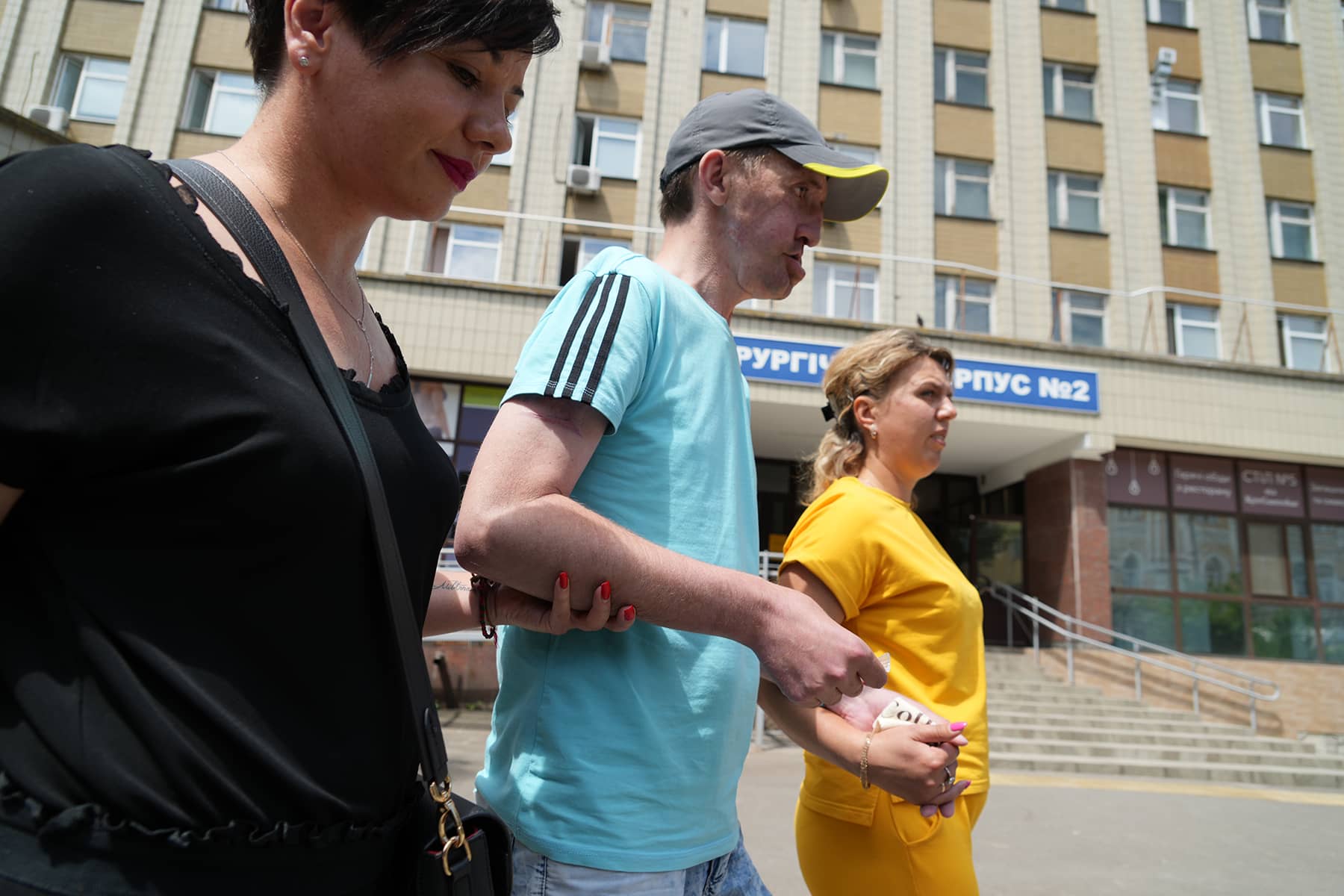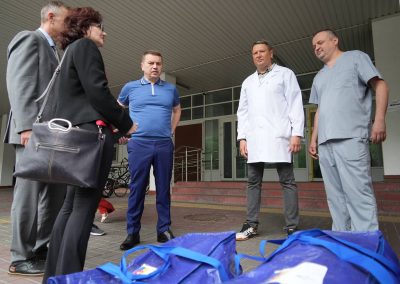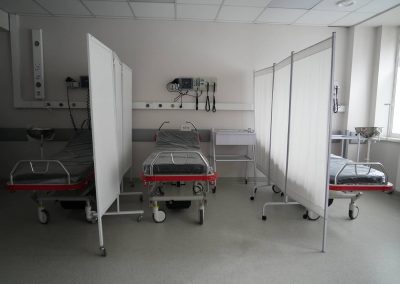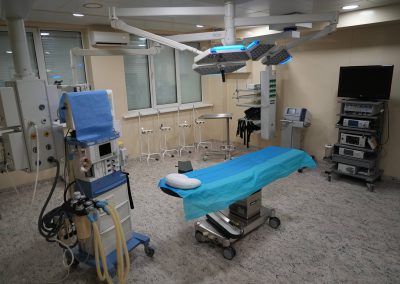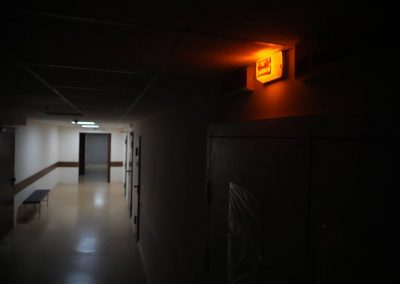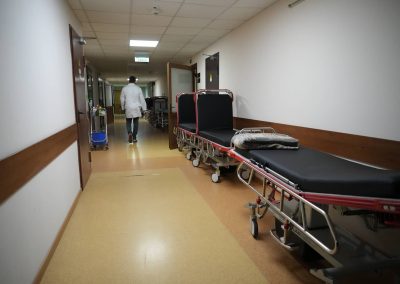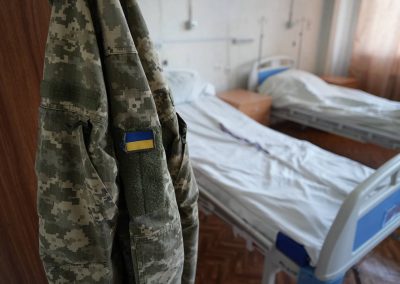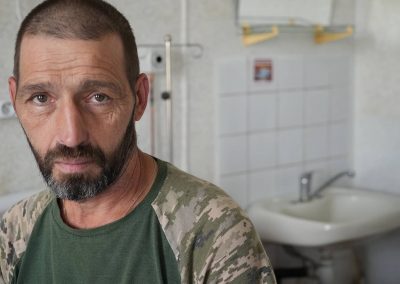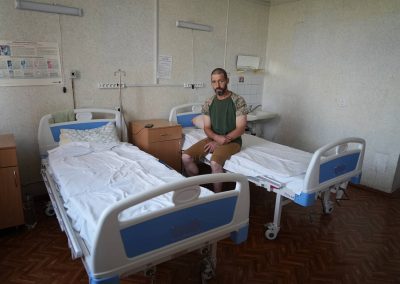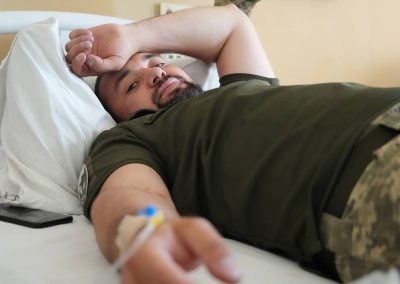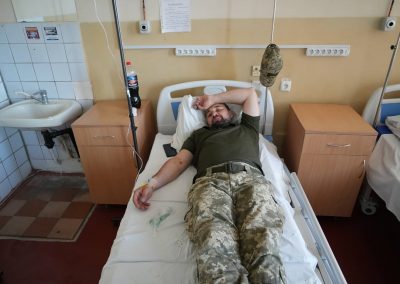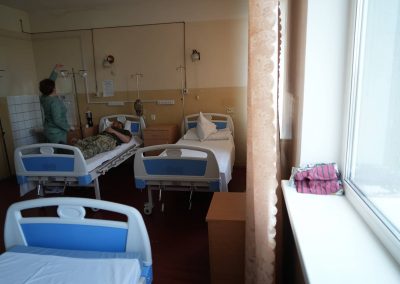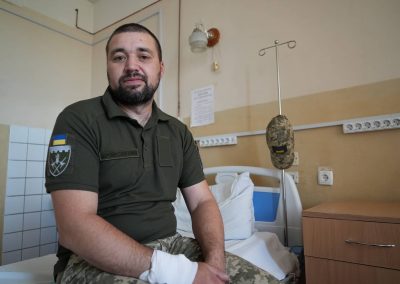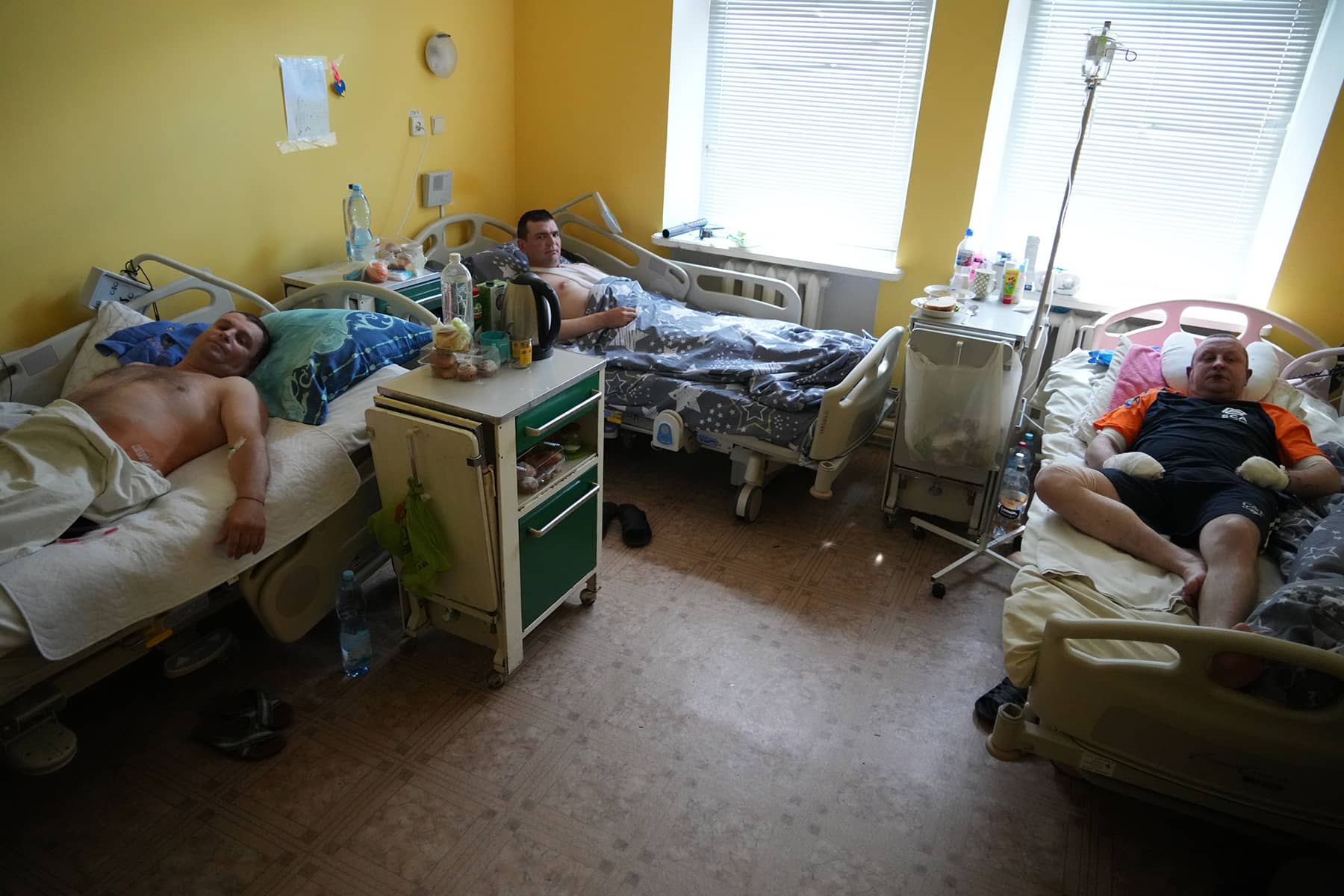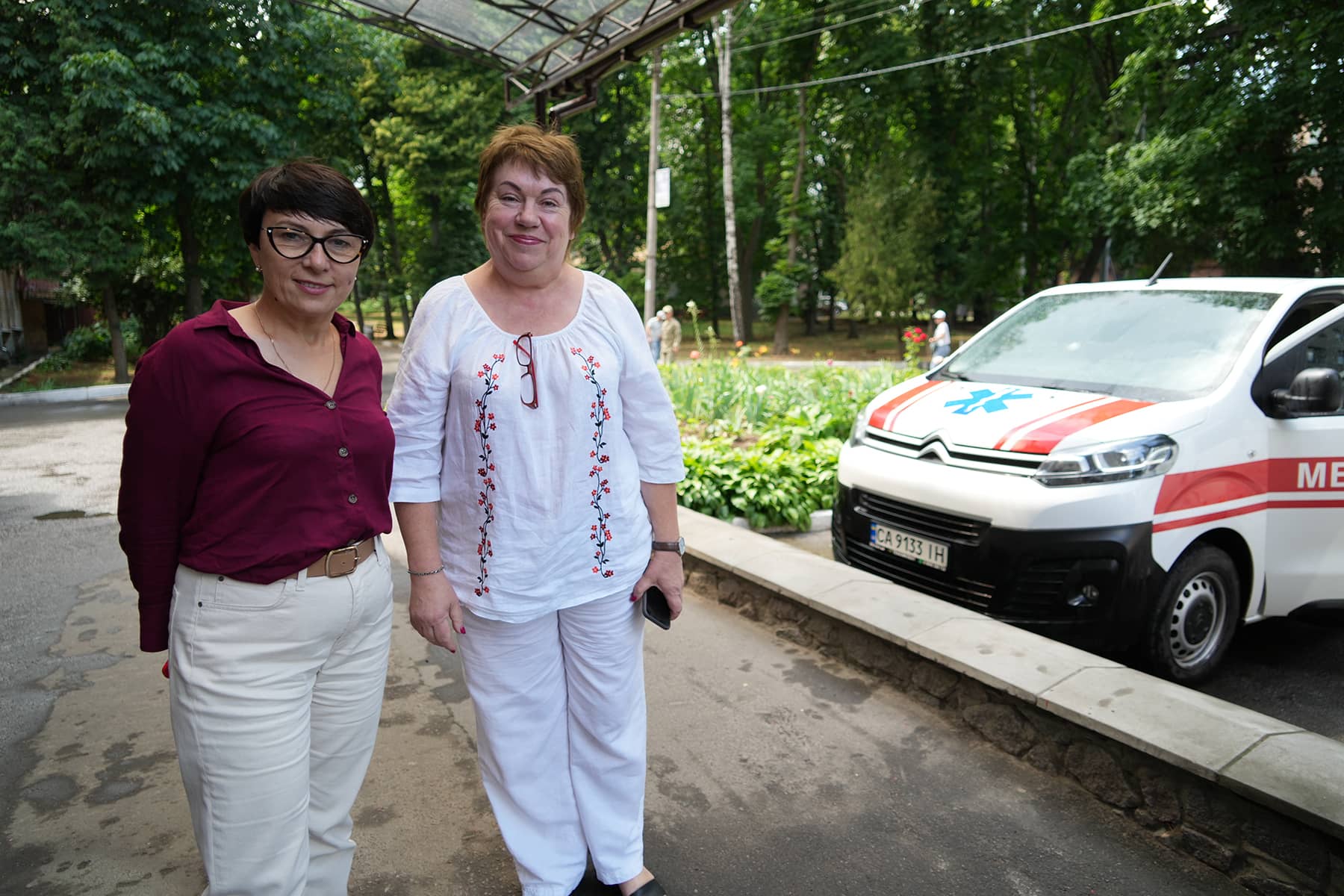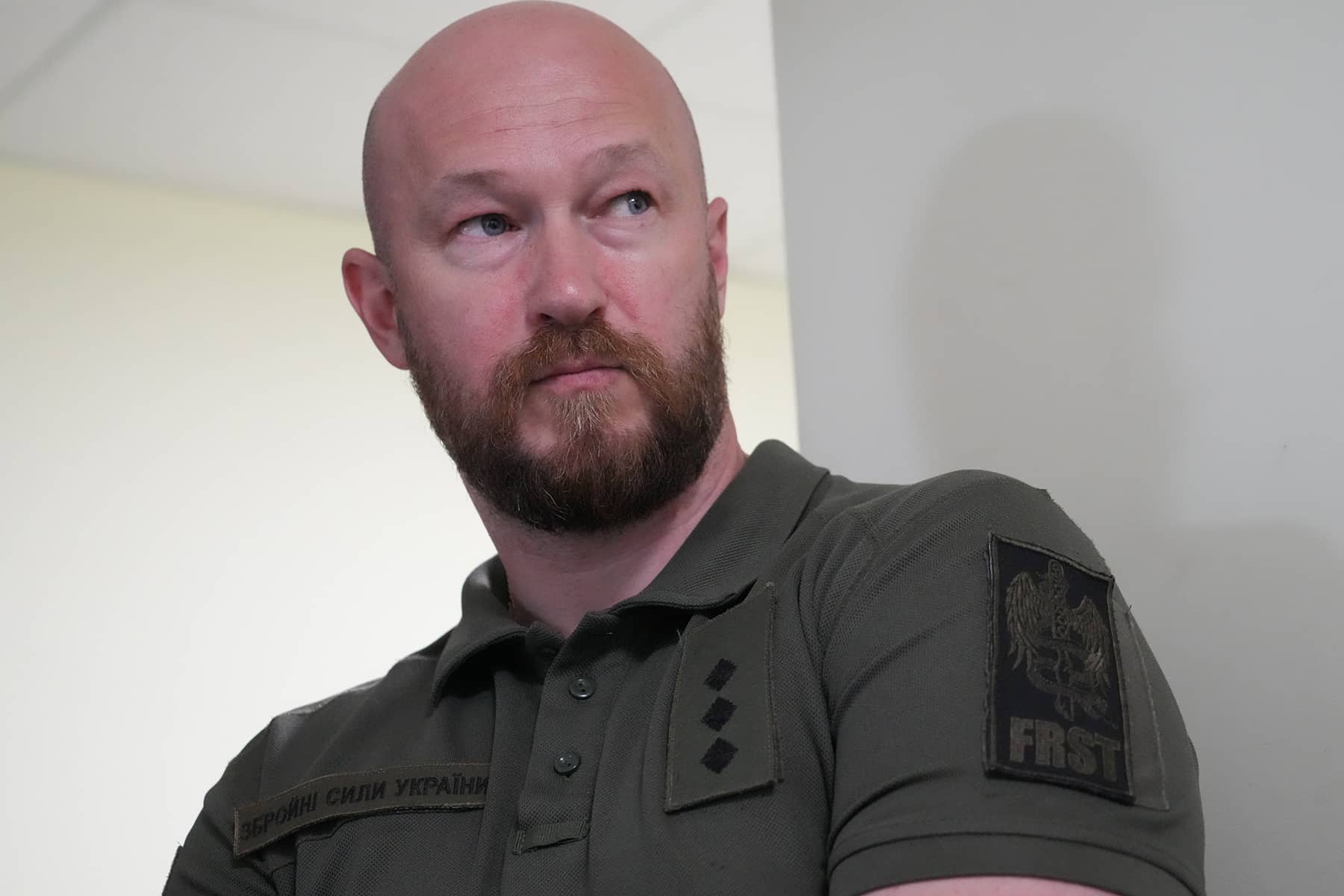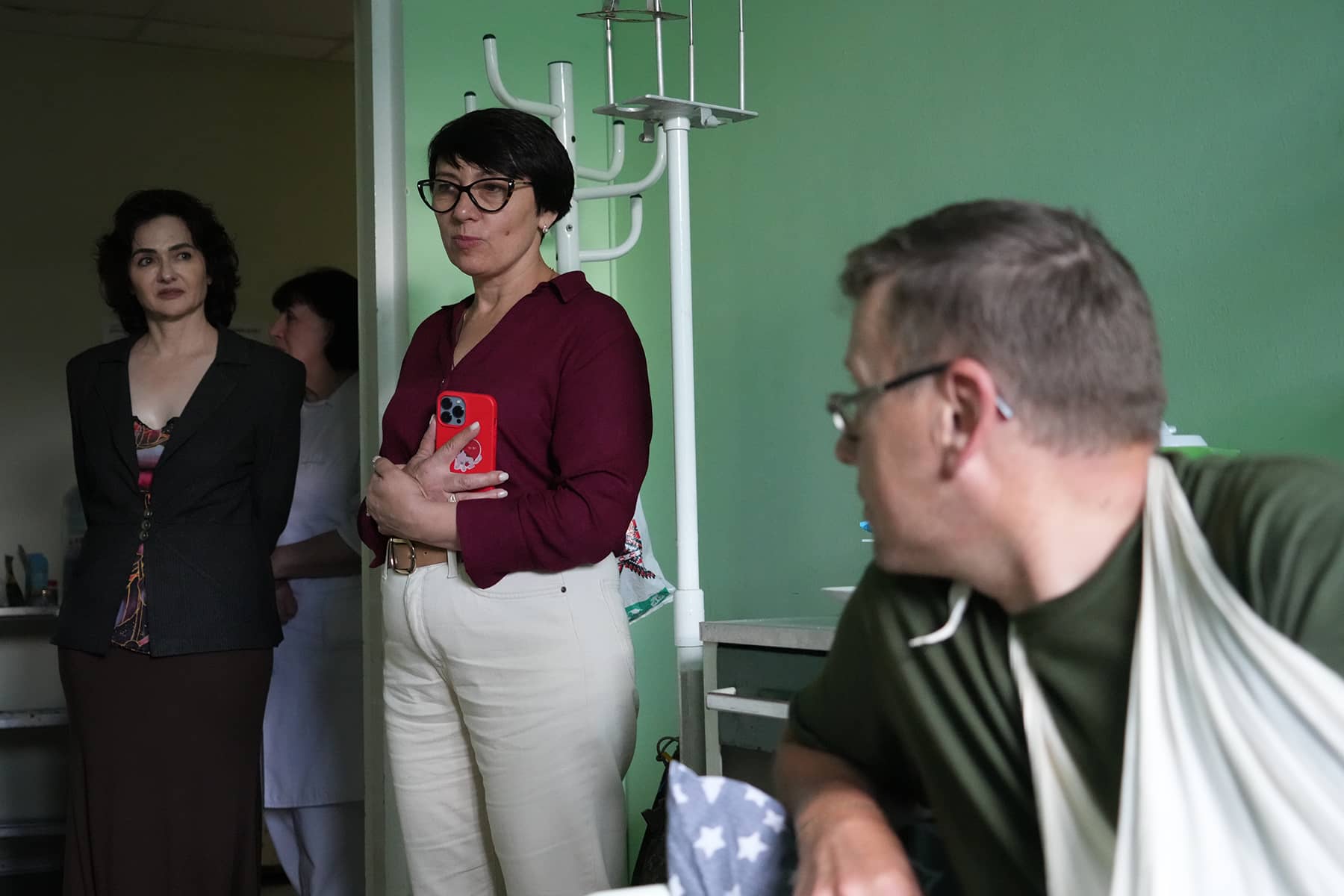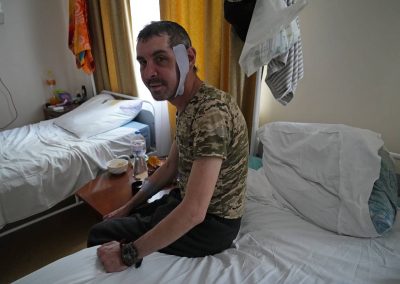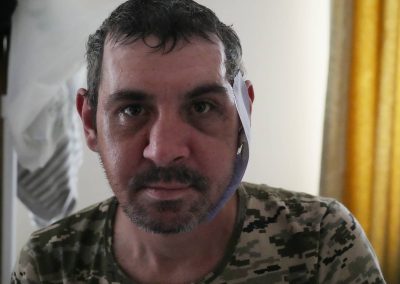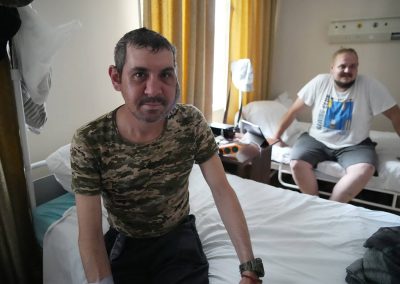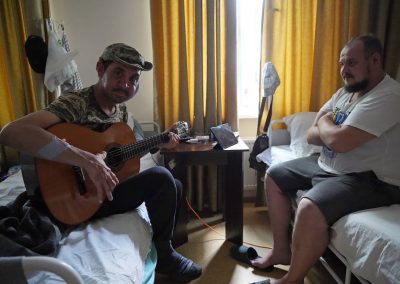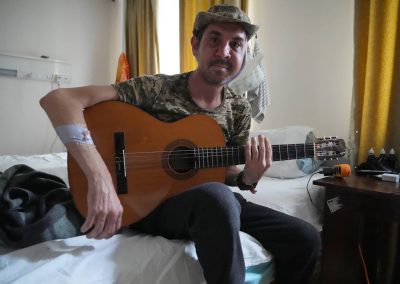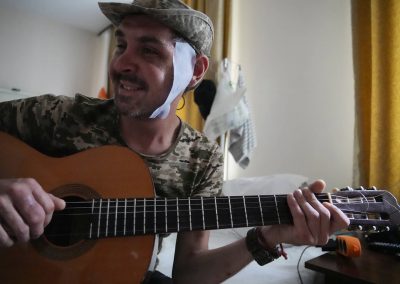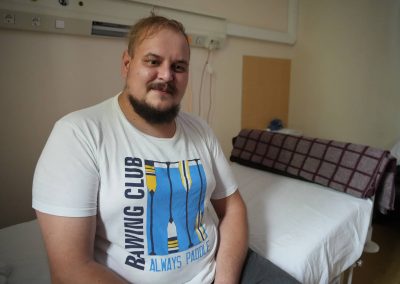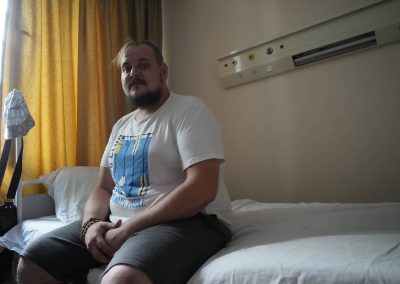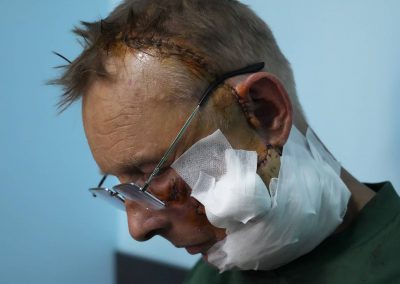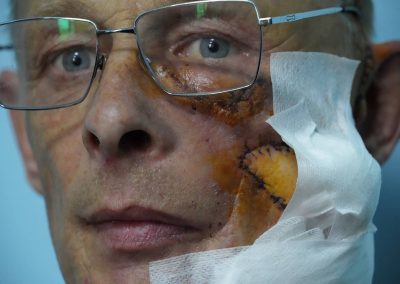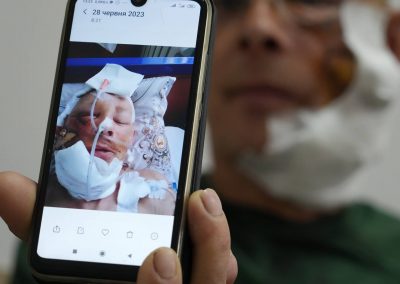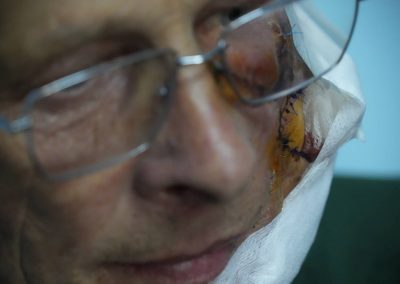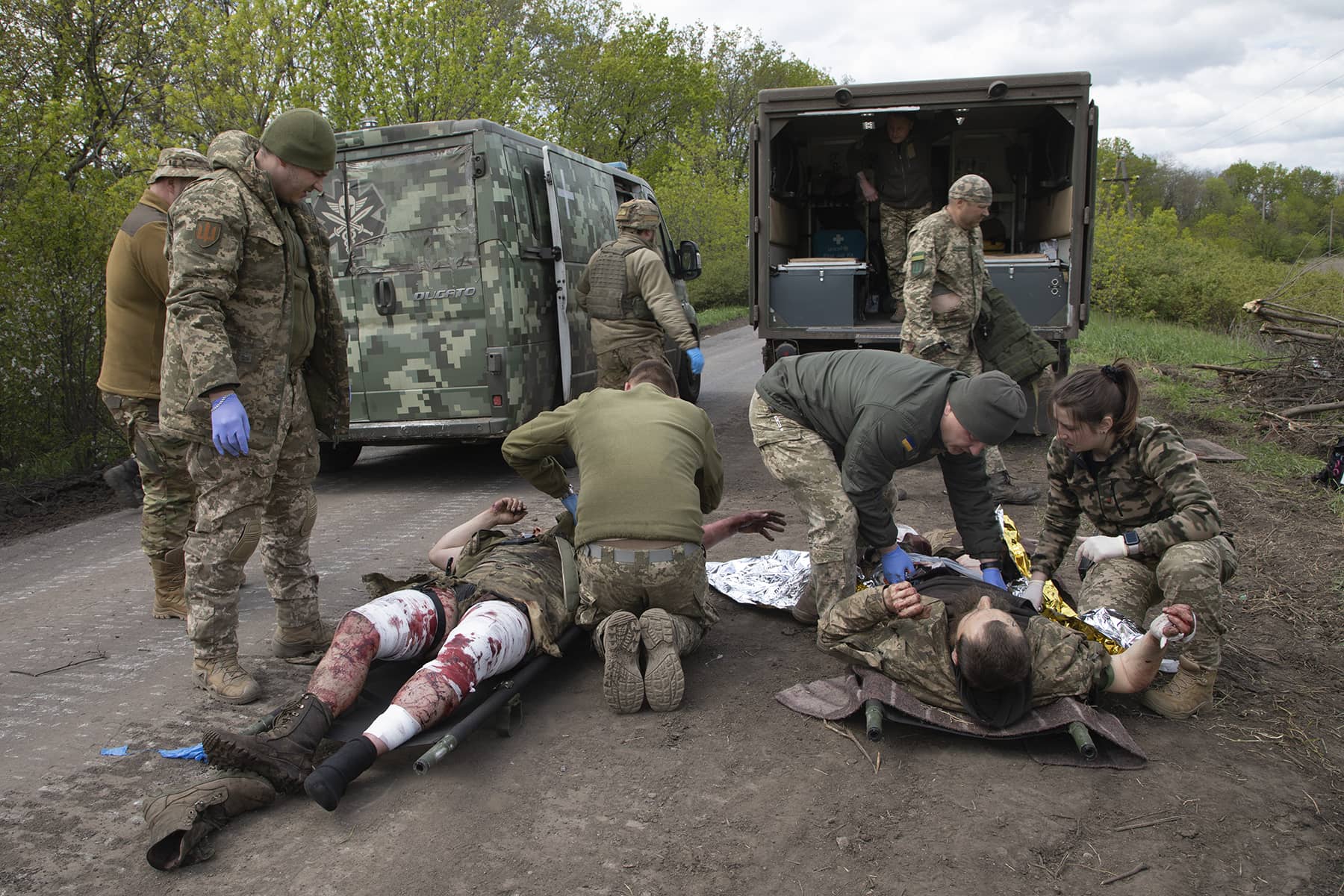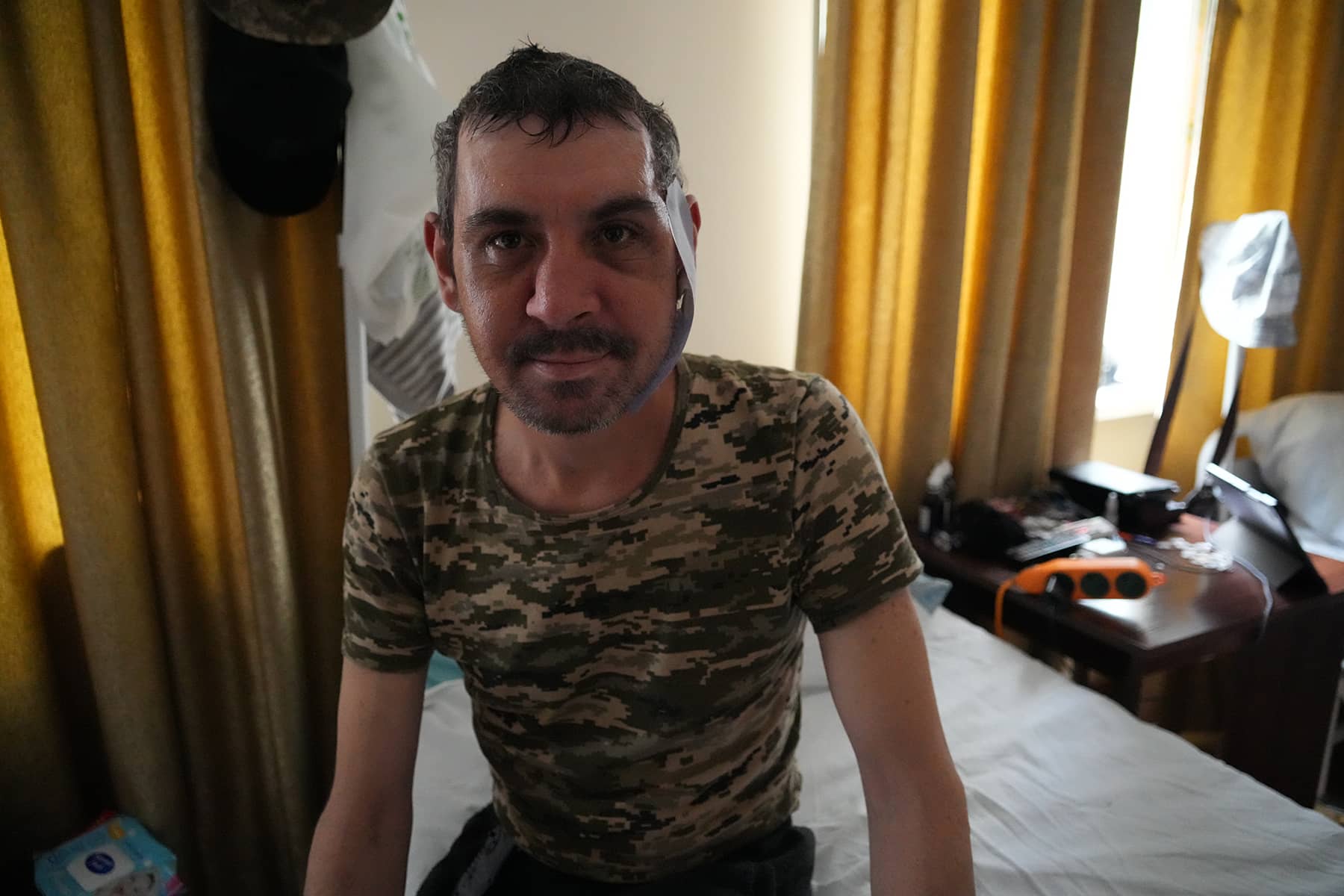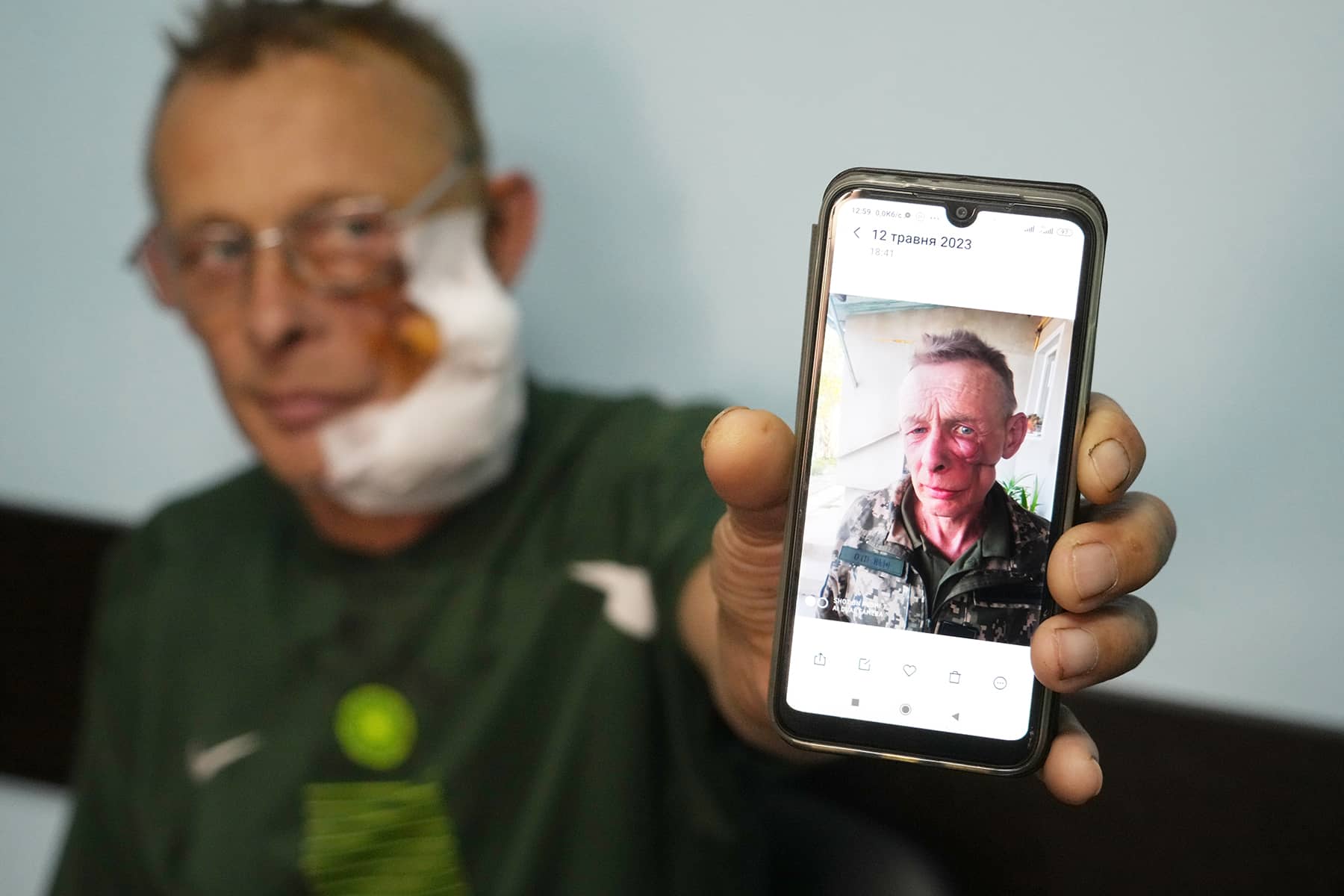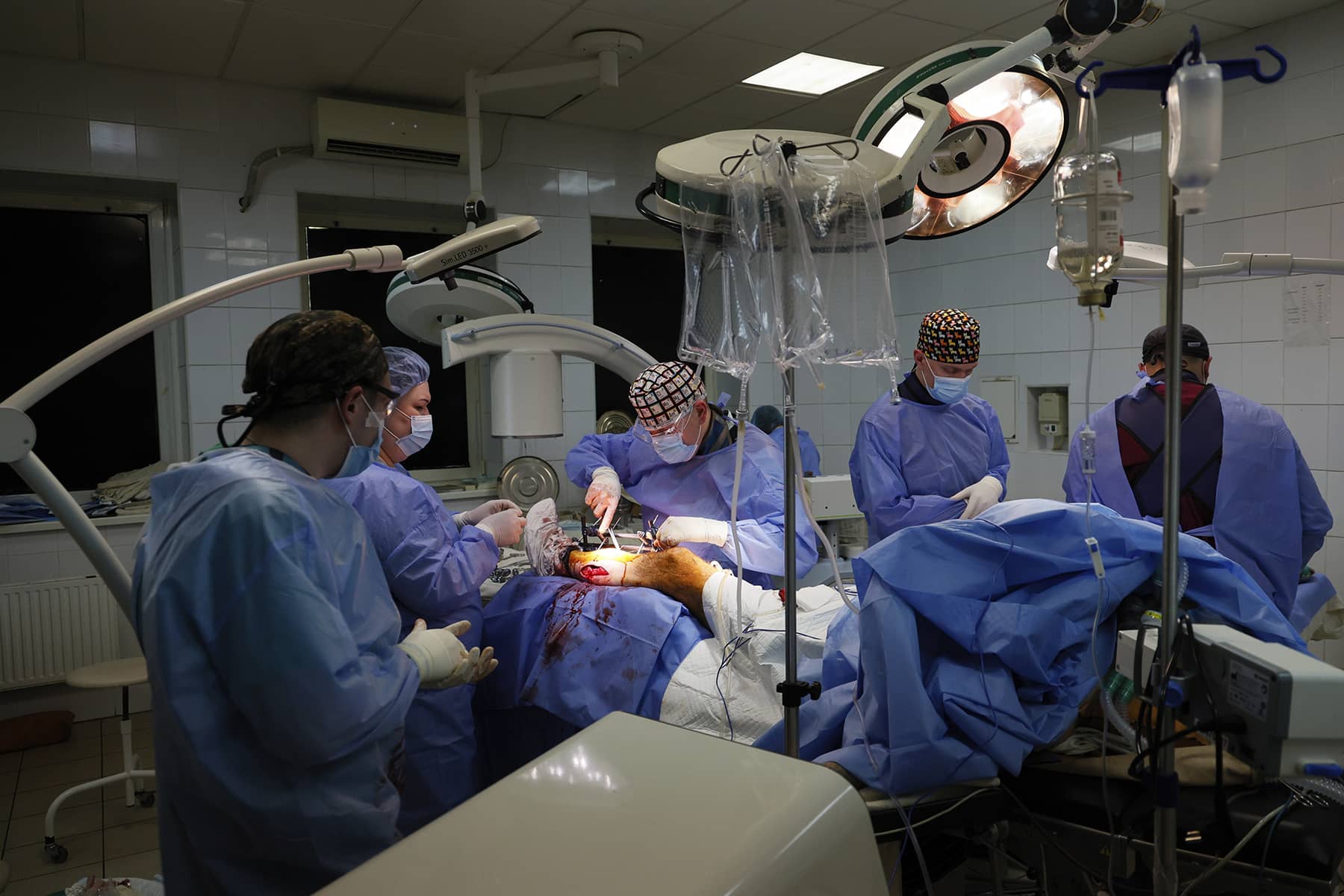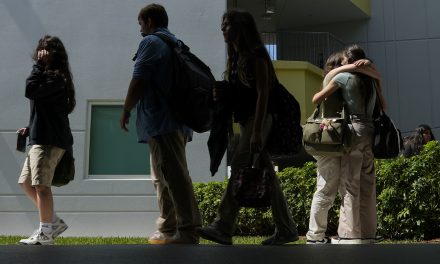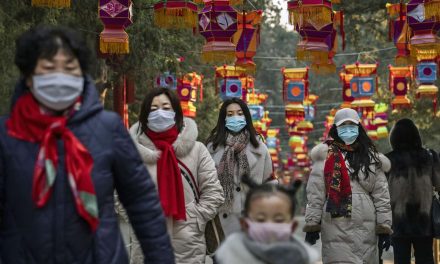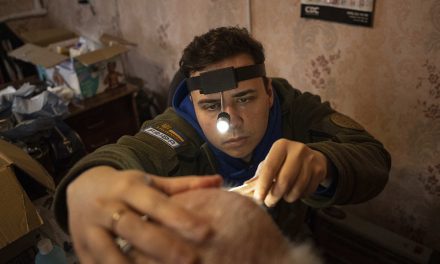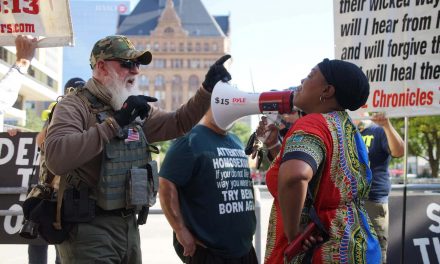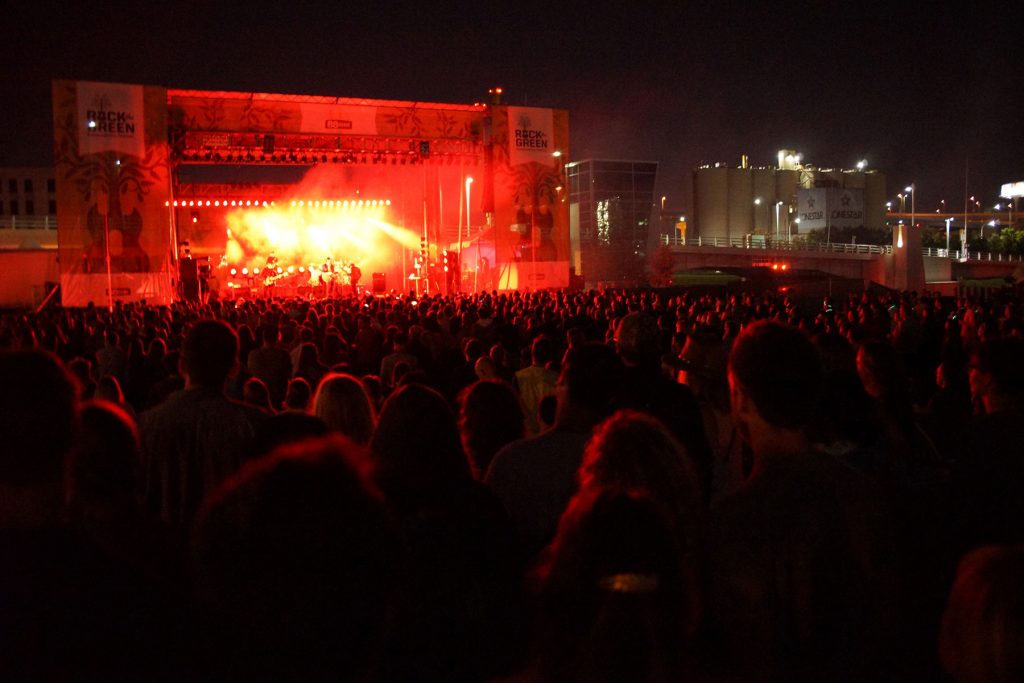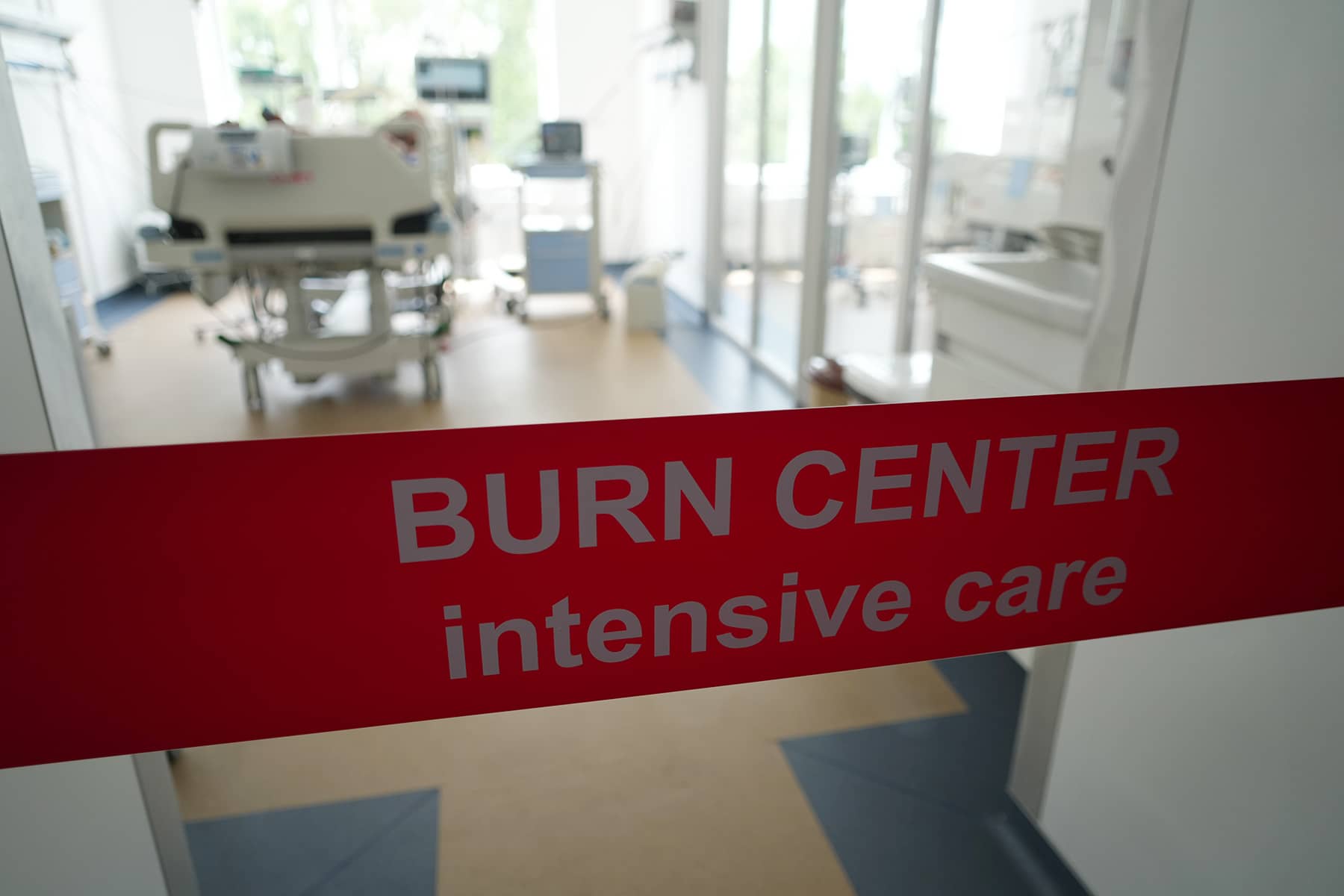
GRAPHIC PHOTO WARNING: This gallery contains news images from war that some viewers may find disturbing.
It was deeply moving to visit military hospitals across Ukraine. The experience offered a glimpse into the lives of wounded soldiers and their spirit. Upon entering each room was the sight of shattered bodies, left with the indelible marks of war. Their scars bore witness to terrible battles that could not be imagined.
Milwaukee Independent visited many hospitals in Ukraine over several weeks in June and July, primarily in the regions around Lviv, Kyiv, and Uman. Some institutions were military or civilian, or a combination of both, and had different levels of security.
Any location in Ukraine could instantly become a frontline of the war, if targeted by Russia’s Iranian-made suicide drones. In the interest of safety, and abiding by restrictions on journalists for reporting by the Armed Forces of Ukraine, the EXIF data has been cleared and geotagging removed for every published image in this feature. Detailed information regarding locations and individual names have also been omitted as necessary.
Russia’s targeting of hospitals in Ukraine reflects its blatant disregard for the principles of humanity and the laws of war. The deliberate attacks are designed to extend psychological warfare on the civilian population and fuel a humanitarian crisis.
On May 26, a Russian missile evaded Ukrainian air defenses to demolish part of a hospital complex in Dnipro. The city of Dnipro serves as a hub for Ukrainian soldiers wounded in battle, usually a first stop before they are transported to hospitals in other parts of the country.
The universal atmosphere in military hospitals was a mixture of pain, determination, and hope. Along with constant reminders of the immense sacrifices made by Ukrainian soldiers to defend their homeland and protect their freedom.
Before the war, many soldiers had no military experience and were employed in factory jobs. Yet each had answered the call to defend their nation against a brutal invader.
On January 20, 2023, in a district of Bakhmut, Viktor Hradishyn received serious injuries to his face from a mine explosion. He suffered burns and multiple fractures across his nose and jaw. Little was left of his skull before reconstructive surgery. A native of the Ternopil region, Hradishyn originally worked at a radio equipment factory before he was called up for military service on February 25, 2022. In December 2022, he was assigned an assault brigade and was deployed for combat in the Donetsk region.
Hradishyn was already publicly known through fundraising efforts for his surgery. He was part of the “Doctors for Heroes” project, a charitable foundation that provided maxillofacial reconstruction for anyone wounded as a result of Russia’s armed aggression.
Hradishyn talked about the shared bonds with members of his unit, and making the sacrifices demanded by war. His story was like so many of the combat veterans receiving treatment around him.
“I had hard times in Bakmut, but I fought alongside my brothers. The price of war has claimed many friends,” Hradishyn said, through limited English and with the help of a translator. “Here at the hospital, I just wait to heal. Then I go back to fight. I think of my family. Their love keeps me going. I fight to keep them safe. I have no choice. If not me, who will do it? Who will take my place to protect them?”
At every turn, medical professionals could be seen working tirelessly to mend the broken bodies and provide the best possible care that conditions would allow. Their compassion and commitment to healing were evident in every interaction.
One irony when the war started was that surgeons had no statistics on what kind of injuries to plan their limited resources for. So they turned to a Soviet-era book from World War II that documented treatment for the same types of injuries. Even with modern weapons and tactics, what the medical leaders discovered was unexpected. They saw the same injury ratio today as what happened in the 1940s.
Behind the scenes, support networks rallied around the wounded soldiers, offering a lifeline of encouragement, understanding, and empathy. But it was an inconsistent effort. During talks with wounded members of the military at several hospitals, Milwaukee Independent was told that most of the recovering soldiers had not had any visitors. Often family members were sent to safety in another country, or friends were also deployed too far away.
“We ran into similar situations with soldiers at hospitals in Kyiv, who had no visitors,” said a nurse in Lviv. “After discussing the situation, we launched a project where a limited number of volunteers would regularly visit them. But the feedback we got was very different. Some of them felt better meeting new people. Some of them initially agreed, but later felt uncomfortable. It has been a complicated situation to offer emotional support, because volunteers are not either friends or family.”
Wounded Ukrainian soldiers will continue to face both physical and mental challenges during their healing and recovery processes. The toll of their injuries, combined with the trauma of war, create obstacles on their path to recovery. One soldier said that sometimes he felt like he was navigating actual landmines.
The significance of Ukraine’s superior military medicine over Russia on the battlefield cannot be understated. It has had an impact on operational effectiveness and the well-being of troops in crucial ways.
“The presence of better medicine in Ukraine directly translates into saving more lives,” a military doctor in Kyiv said. “With access to advanced medical resources, techniques, and expertise, Ukrainian armed forces are better equipped to provide effective treatment to injured soldiers. This results is a higher survival rate among the wounded, since critical injuries can be addressed with greater success.”
There is also a higher likelihood of maintaining unit cohesion. When soldiers are injured, prompt treatment enables a swift recovery and reintegration back into their units. By minimizing disruptions caused by injuries, Ukrainian units can maintain their operational readiness. The benefits even extend to troop morale. Ukrainian soldiers who have access to comprehensive medical support are more likely to exhibit higher motivation.
By contrast, a lack of confidence in Russian medical support has eroded morale and diminished combat effectiveness among invading troops. Shortcomings in Russia’s military medicine have also resulted in higher casualties, unnecessary loss of life, and a greater strain on unit cohesion.
Milwaukee Independent had military clearance to photograph recovering soldiers at various locations. It was good luck for Ukraine that most of the hospitals visited were not full of recent battle casualties. But less than good luck for the process to document those medical situations with images.
In particular, many patients with severe facial wounds and in need of reconstructive surgery were too uncomfortable with their injuries to allow their condition to be photographed.
The images contained in the feature represent a photojournalistic balance of respecting the privacy of individuals, while trying to share with the public the human cost of war.
EDITOR’S NOTE: Milwaukee native George Banda is well-known in Veteran communities for his selfless dedication. A highly decorated combat medic in Vietnam, Banda measured the cost of war by the damaged bodies of his friends. For the second Milwaukee Independent assignment to Ukraine, Banda was generous enough to donate an assortment of challenge coins and patches from his collection. These special keepsakes, with purple hearts and other esteemed icons of service, were given to many wounded Ukrainian soldiers. They were accepted with profound appreciation. Therefore, it is with deep gratitude that Milwaukee Indpendent acknowledges and thanks George for his thoughtful donations. He offered a message of support, from a veteran of one war to veterans of another – all fighting for the preservation of democracy.
Series: Return to Ukraine
- Return to Ukraine: A trauma loop of travel from Milwaukee to a country still at war a year later
- From Weddings to War: How Kostiantyn and Vlada Liberov photograph Ukraine's daily horrors
- Being Friends of Angels: The Milwaukee nonprofit saving lives and offering hope in Ukraine
- Mayors of Milwaukee and Irpin expand Sister City cooperation after visit by nonprofit delegation
- Interview with Tom Barrett: U.S. Ambassador to Luxembourg reflects on forging ties with Irpin
- Wisconsin Ukrainians host annual fundraising picnic to support homeland on 500th day of war
- Advanced Wireless to donate 840 access points to rebuild Irpin's citywide Wi-Fi network
- Children of Irpin begin planning mural for Mitchell Airport to showcase Sister City friendship
- Irpin is not forgotten: Residents thank Milwaukee Independent for reporting on their "Hero City"
- Milwaukee photojournalist on assignment in Kyiv during July 2 Russian drone strike targeting civilians
- Russian cruise missile attack kills residents far from front lines in Western Ukraine city of Lviv
- Ukraine arrests man accused of directing Russian ballistic missile strike on Kramatorsk pizza parlor
- Milwaukee offers Ukrainian refugee family life-saving treatment for son's genetic condition
- Nikita Pirnach: Irpin student hopes to help his country after finishing education in Milwaukee
- Sick children wait for overseas medical treatments as a new generation is born in Ukraine during war
- Iryna Suslova: The superwoman saving Ukrainian children abducted by Russia
- How a group of Ukrainian mothers, wives, and daughters are distributing vital humanitarian aid
- Freeing Freddie: Educational program aims to reduce PTSD for Ukraine's war-weary children
- The trauma of living: When being killed is the preferred choice to being disfigured from battle
- President Zelenskyy offers gratitude and awards to wounded soldiers while visiting Lviv Hospital
- Former Vice President Mike Pence visits Irpin during unannounced campaign trip to Kyiv
- Military Hospitals provide vital care for Ukrainian soldiers in need of hope and healing
- Combat surgeons pioneer advances in maxillofacial reconstruction of Ukraine's injured heroes
- Milwaukee donors cover cost of reconstructive surgery for American volunteer wounded in battle
- In their own words: Listening to the Voices of Children talk about their experiences from war
- Traumatized by War: Children of Ukraine carry on after losing parents, homes, and innocence
- Widespread Torture: U.N. report documents Russia's systematic executions of Ukrainian civilians
- Wisconsin volunteers sort and pack donated medical supplies for use in Ukraine's hospitals
- Lviv warehouse serves as vital link in medical supply chain from Milwaukee to frontlines
- Aid from Milwaukee is providing internally displaced people in Ukraine with food and clothing
- Iryna Pletnyova: How the city of Uman transformed into a hub for refugees fleeing war
- Bombs in the night: Why children in Uman are still traumatized by Russia's missile attack
- School Bunkers: When a national flag becomes a memorial to dead Ukrainian students
- Hasidic life in Uman: A journey across Ukraine to the Tomb of Rabbi Nachman of Breslov
- Tetiana Storozhko: Being a witness to the history of Roma culture in Ukraine
- Remembering Oskar Schindler: A photojournalist’s diary from the streets of Jewish Kraków
Lее Mаtz
Boghdan Kutiepov (AP)
Milwaukee Independent has reported on Russia’s brutal full-scale invasion of Ukraine since it began on February 24, 2022. In May of 2022, Milwaukee Independent was the first news organization from Wisconsin to report from Milwaukee’s Sister City of Irpin after its liberation. That work has since been recognized with several awards for journalistic excellence. Between late June and early July of 2023, Milwaukee Independent staff returned to Ukraine for a second assignment to report on war after almost a year. The editorial team was embedded with a Milwaukee-based nonprofit, Friends of Be an Angel, on a humanitarian aid mission across Ukraine. For several weeks, Milwaukee Independent documented the delivery of medical supplies to military and civilian hospitals, and was a witness to historic events of the war as they unfolded.
Return to Ukraine: Reports about a humanitarian mission from Milwaukee after a year of war

